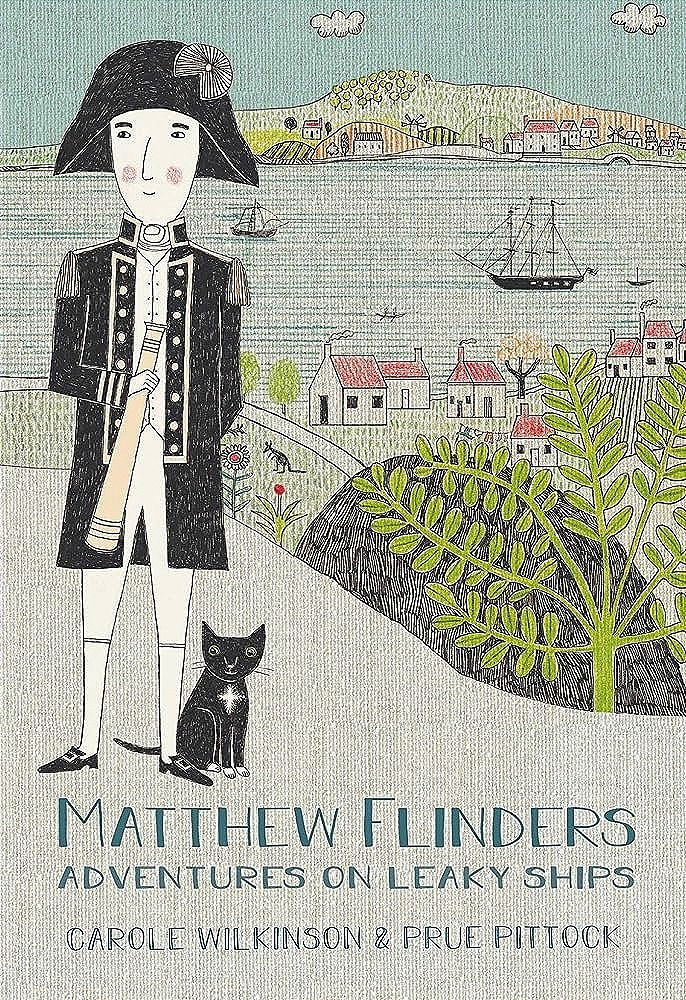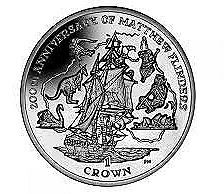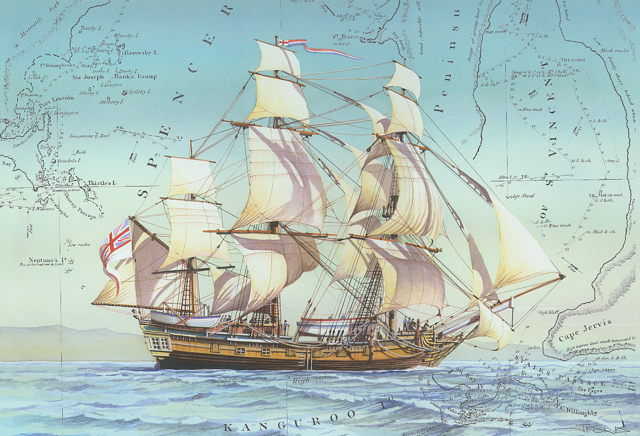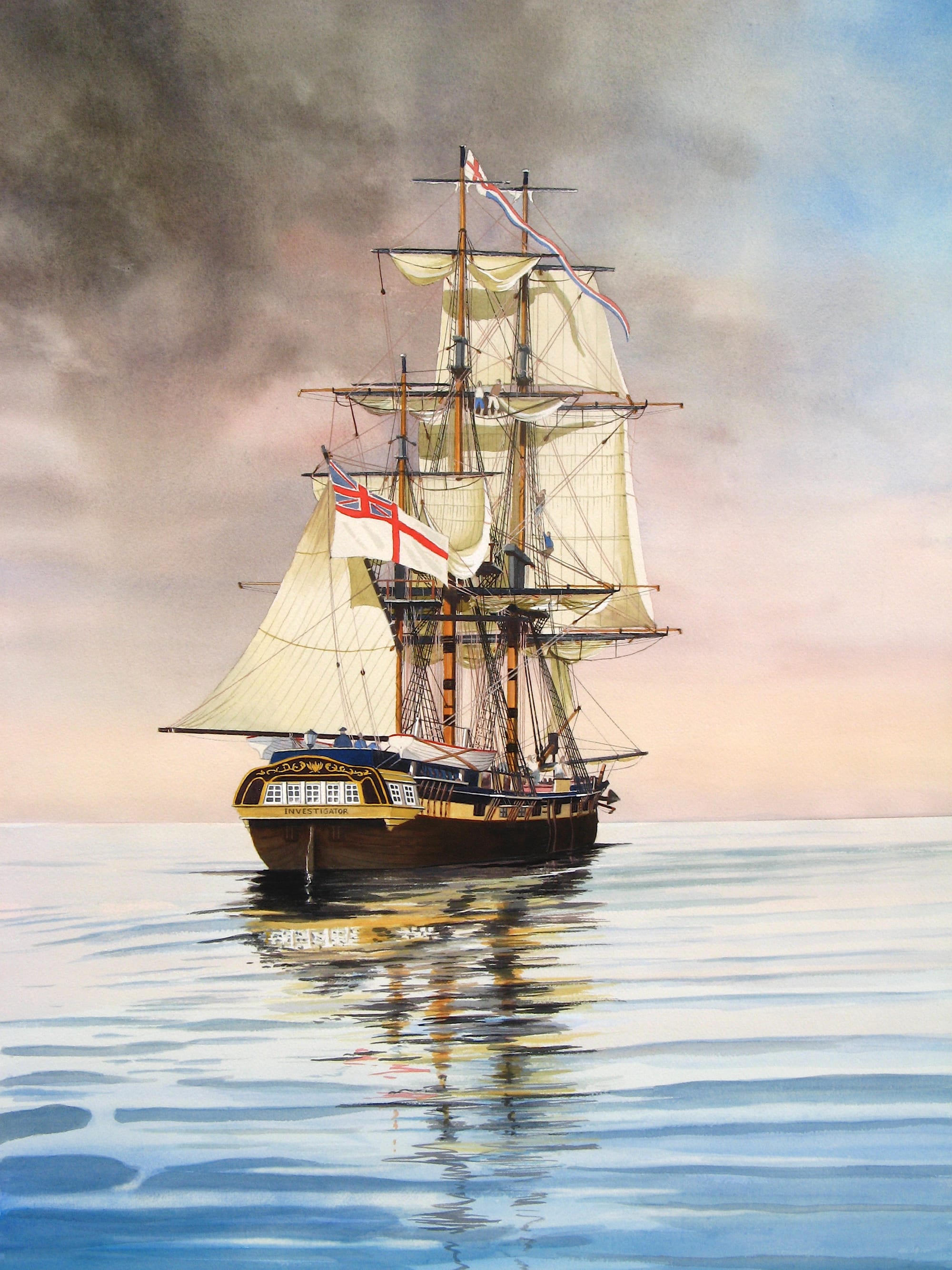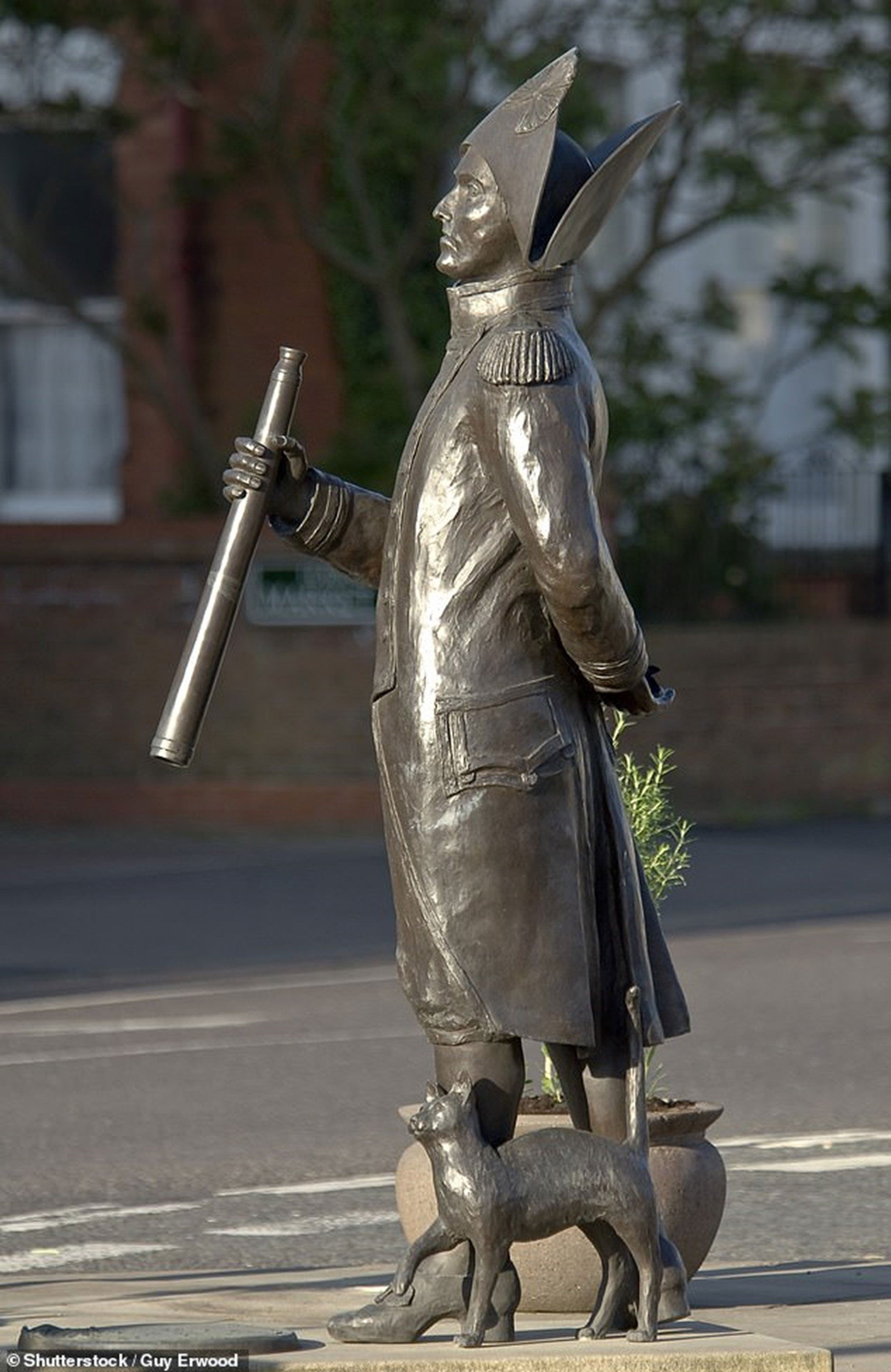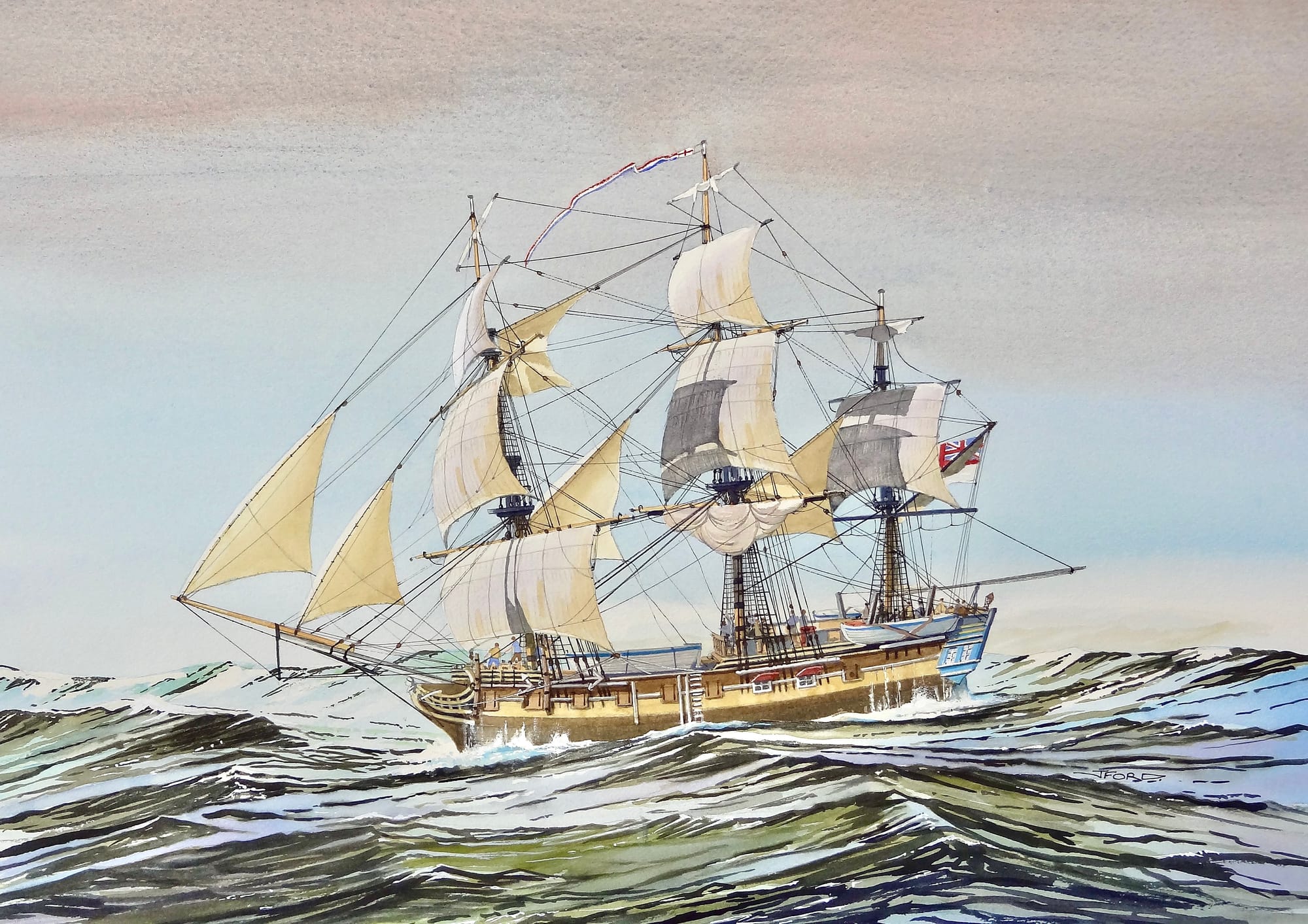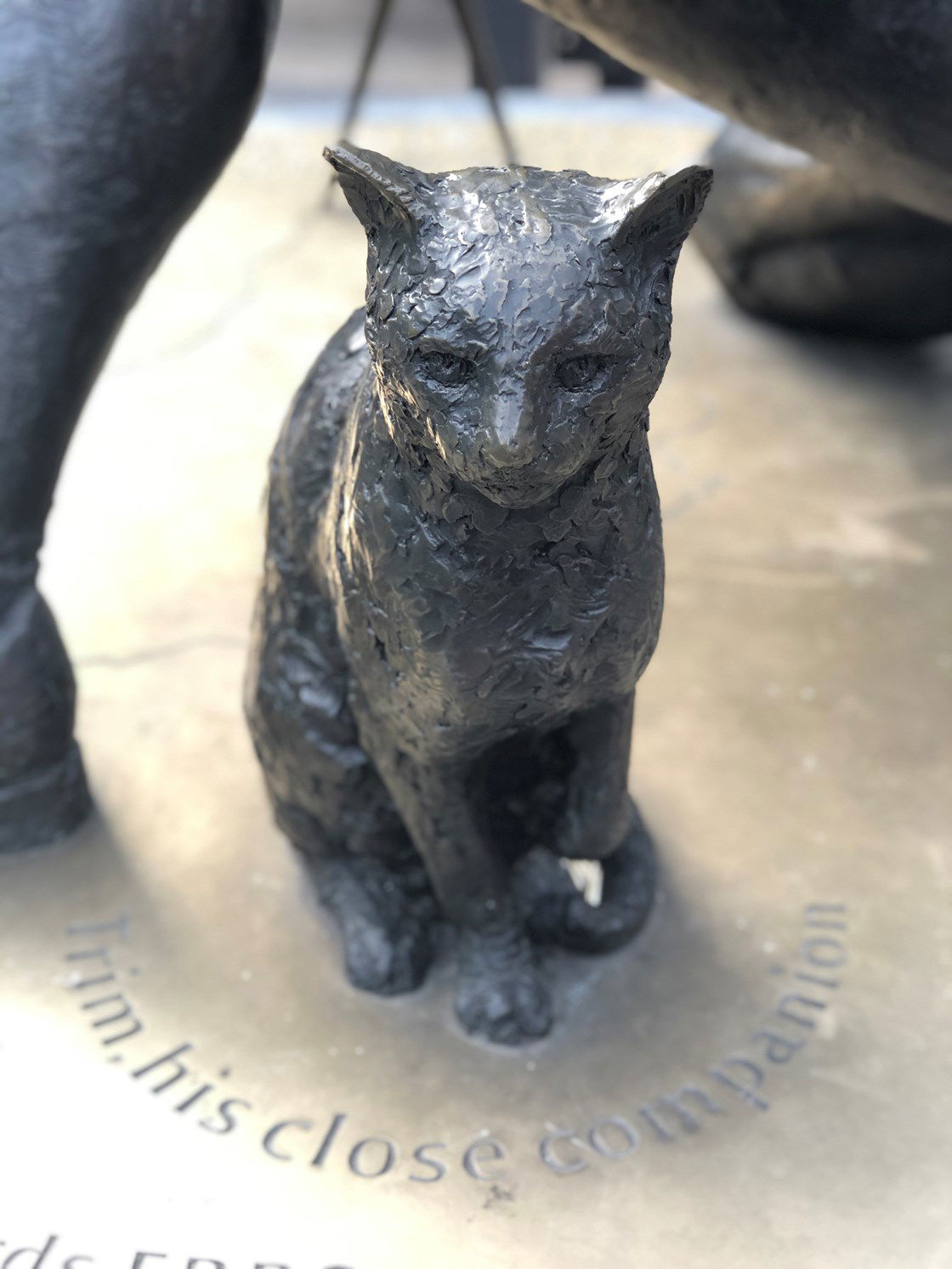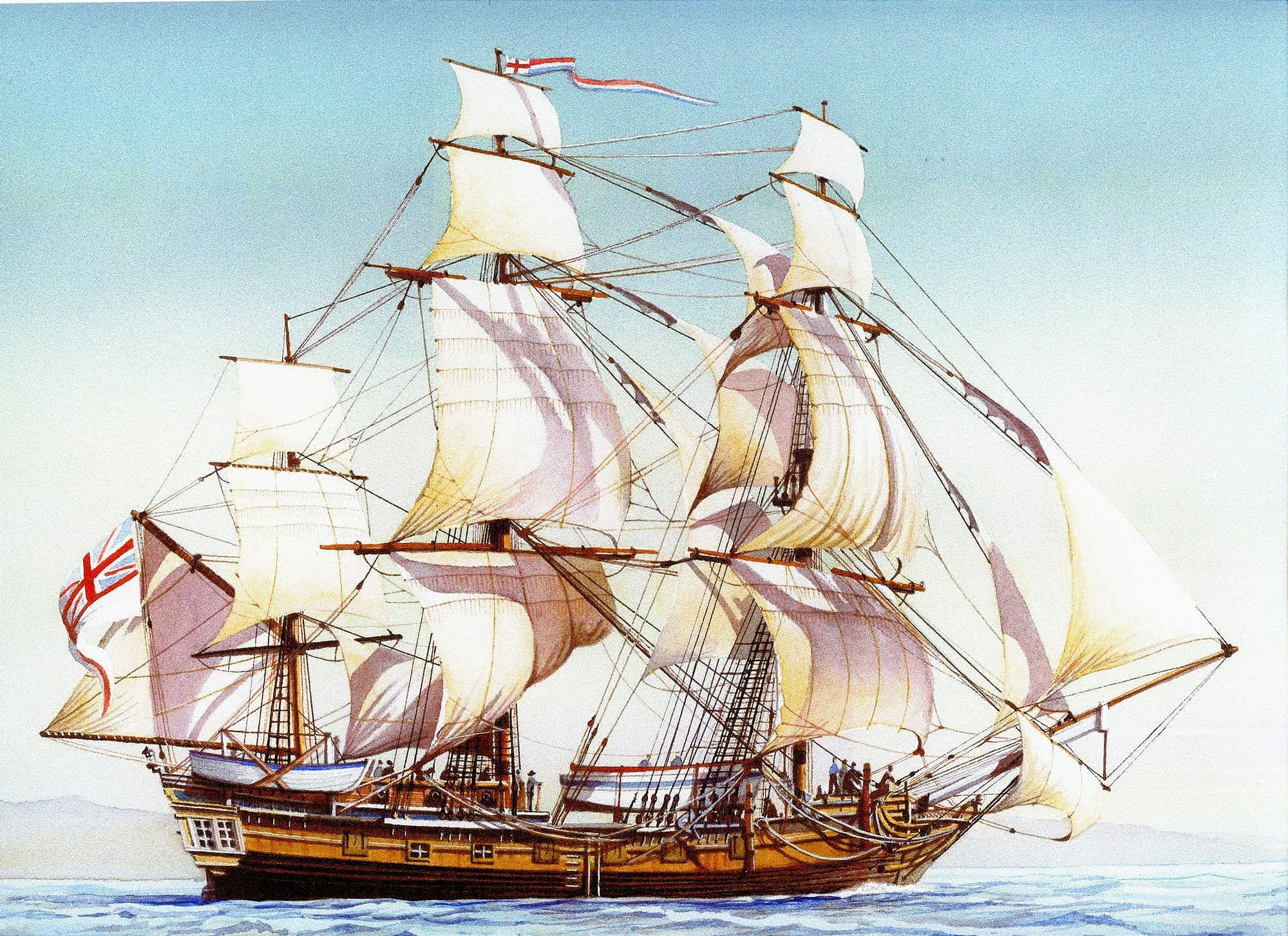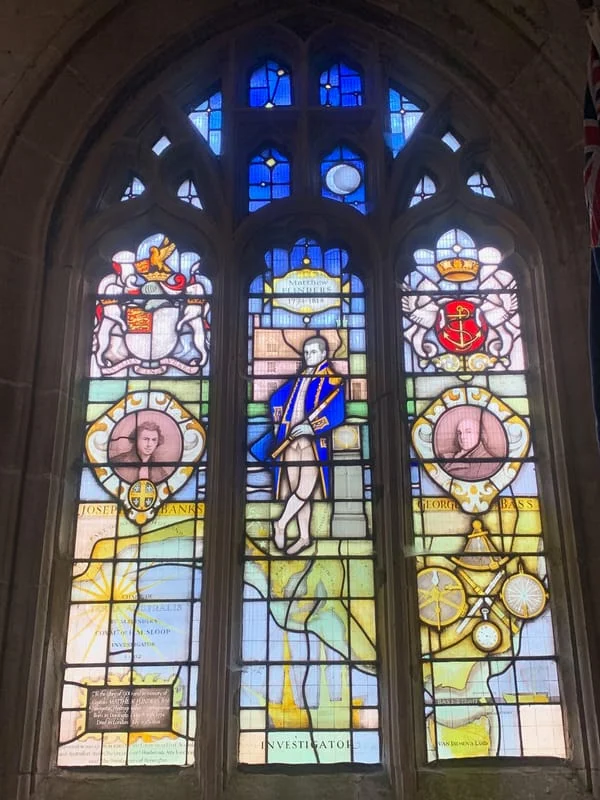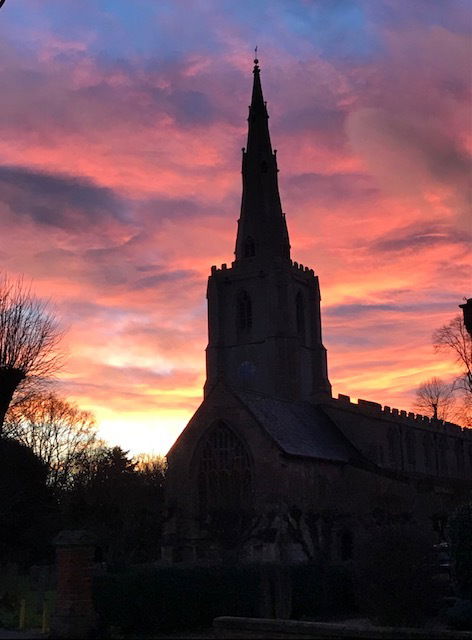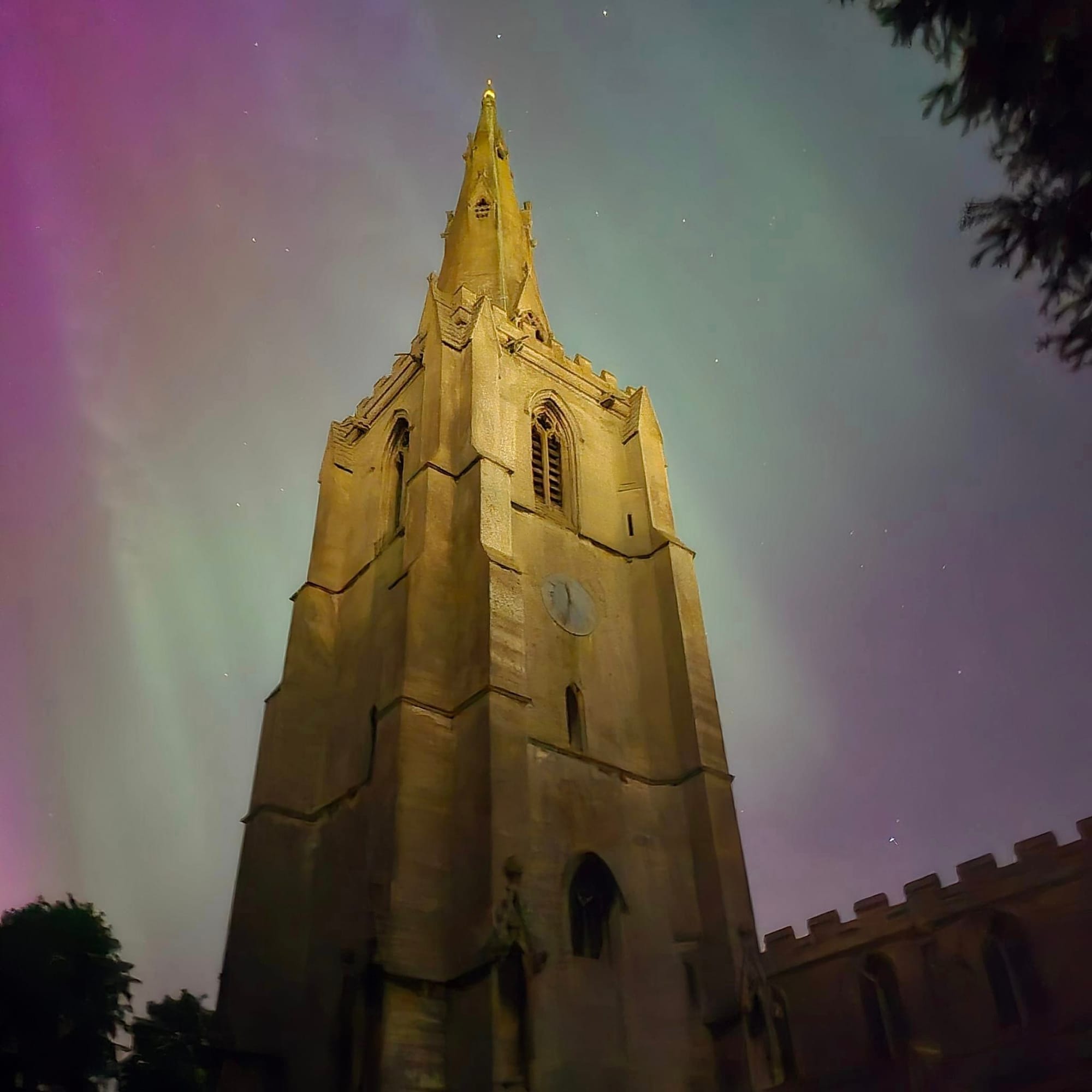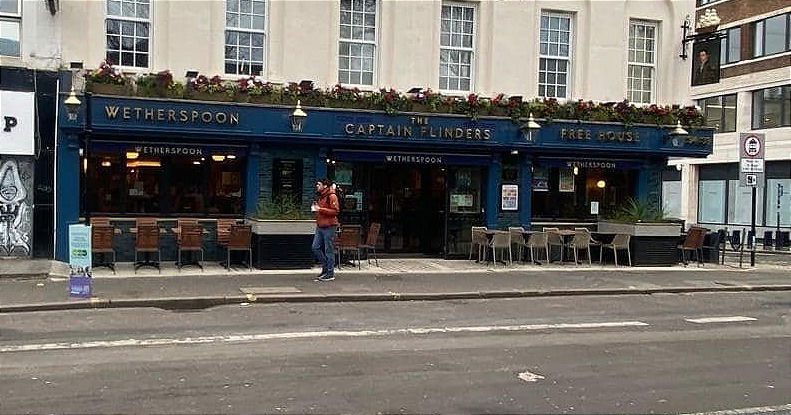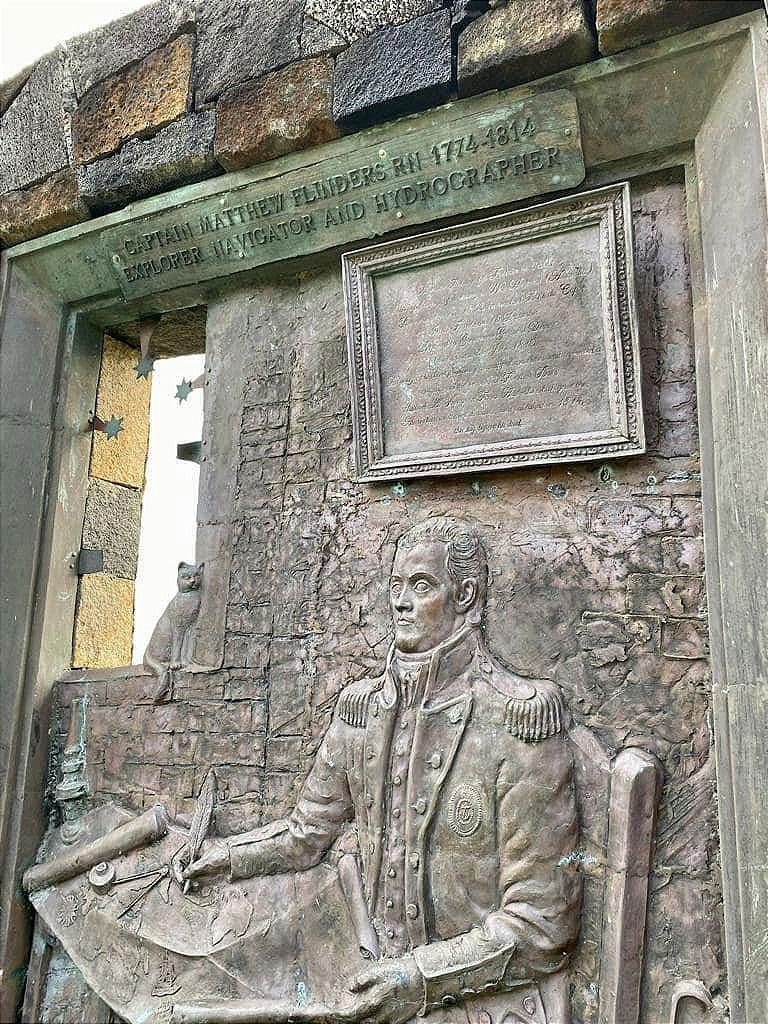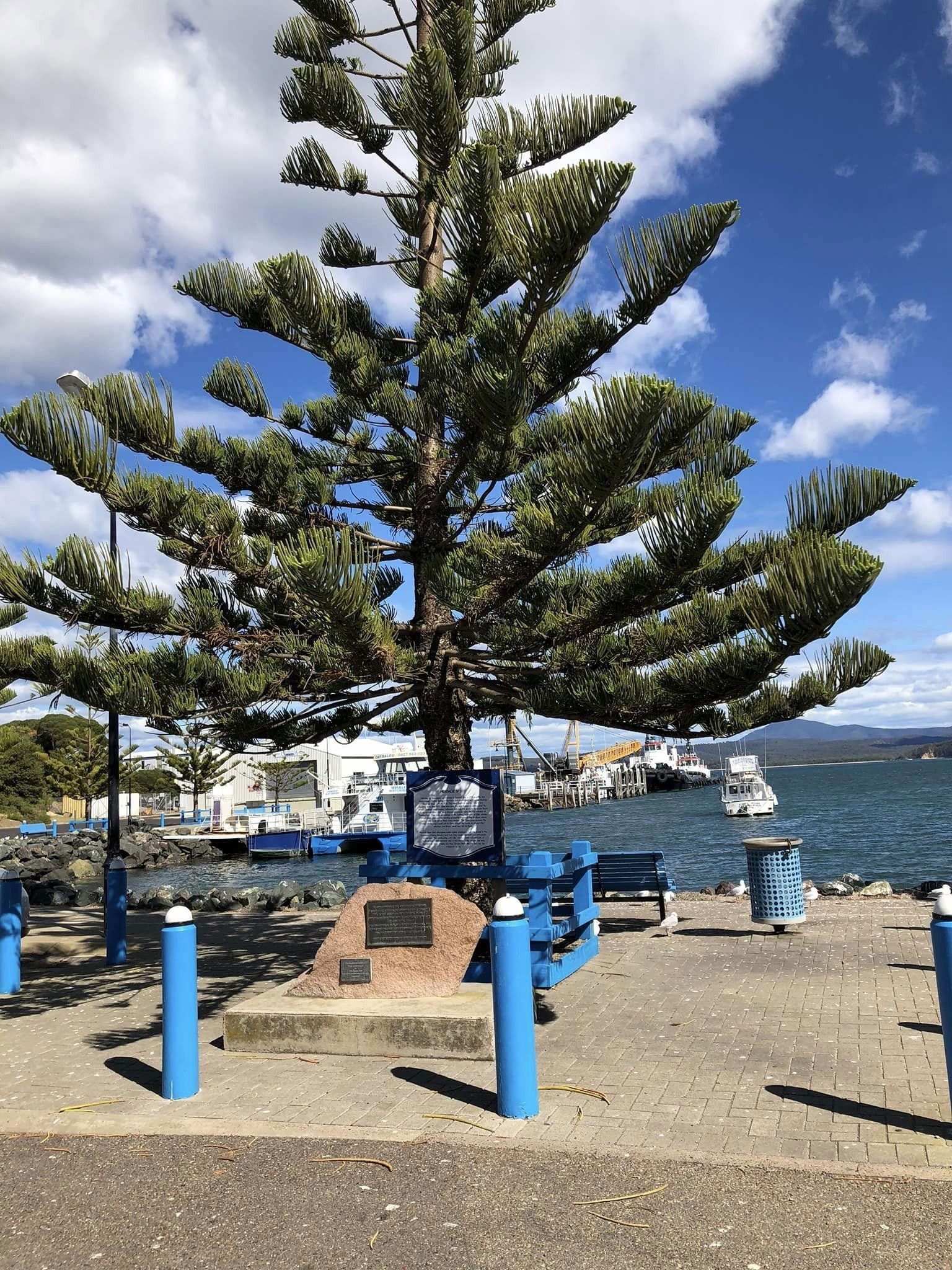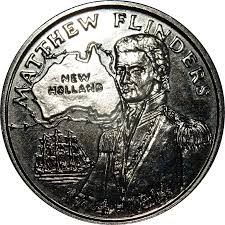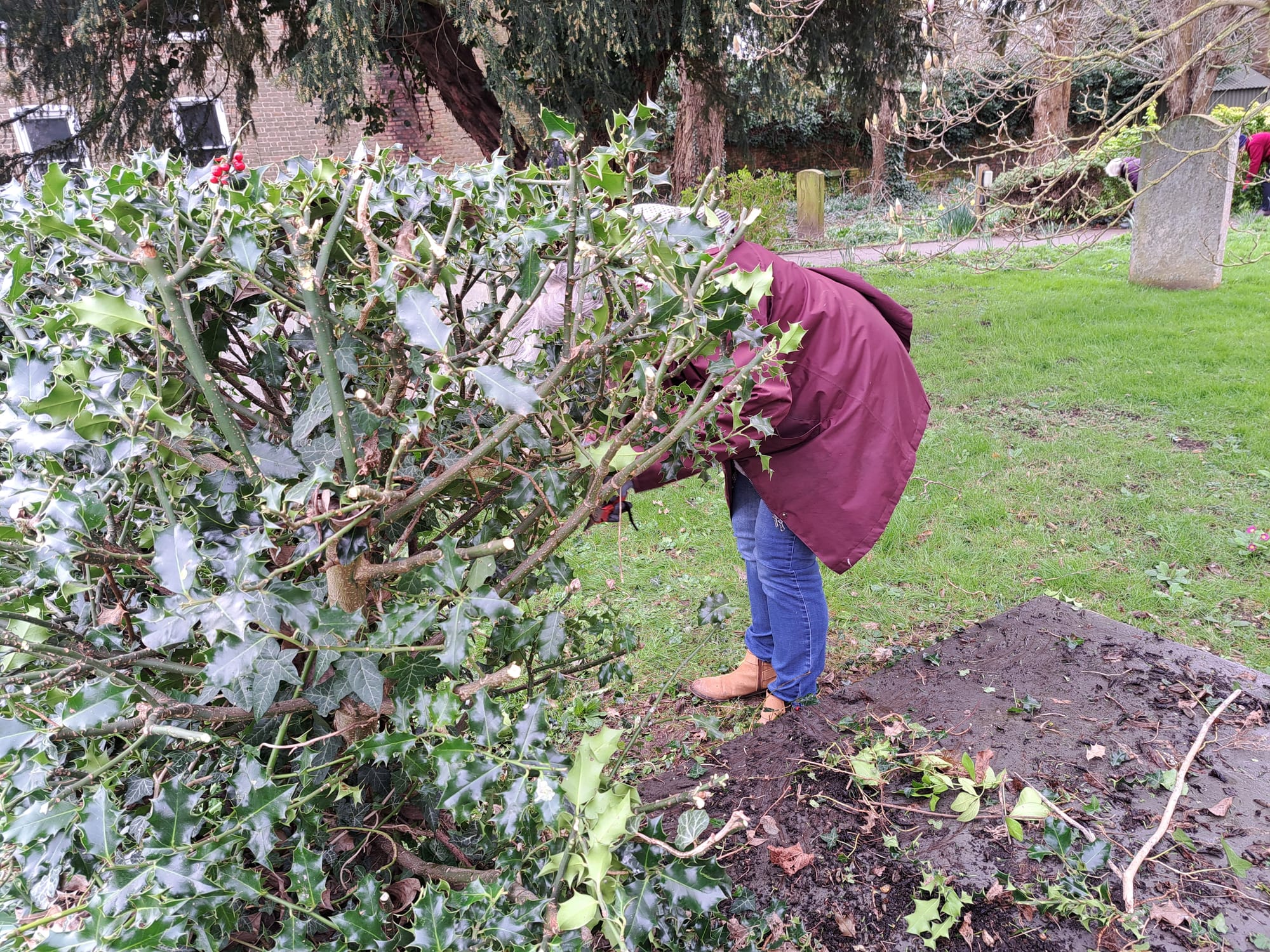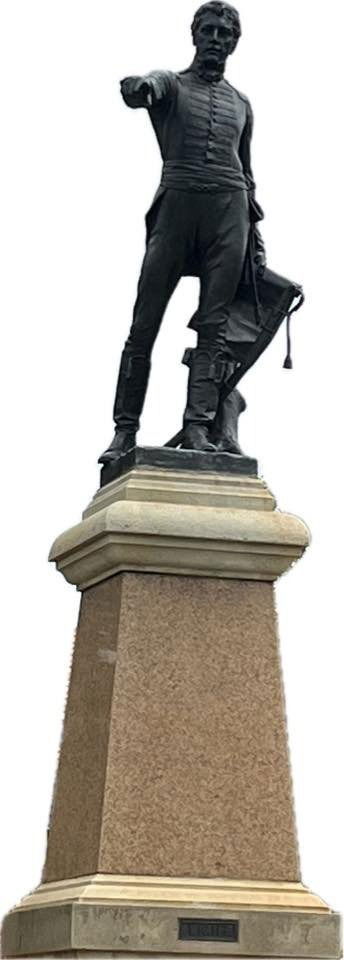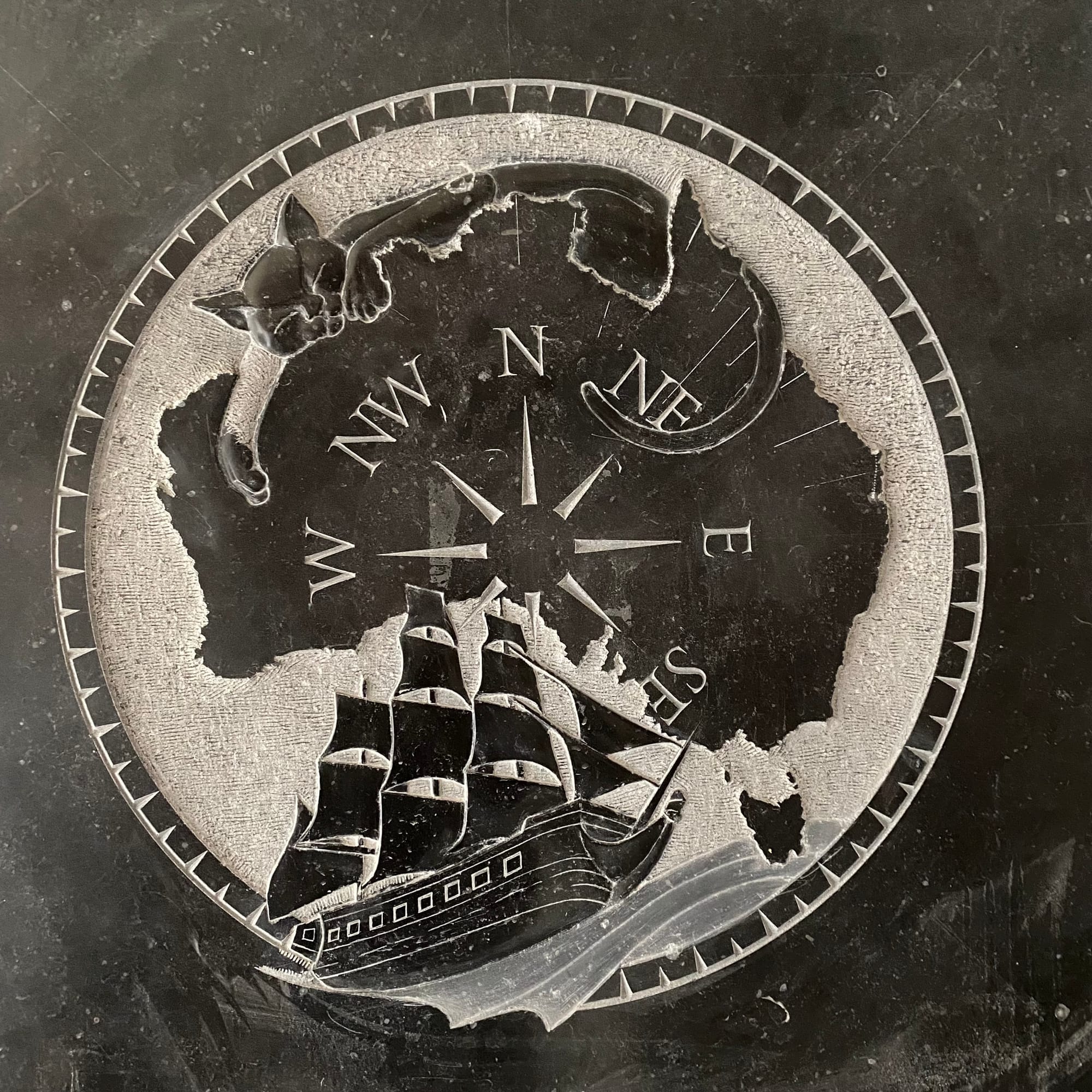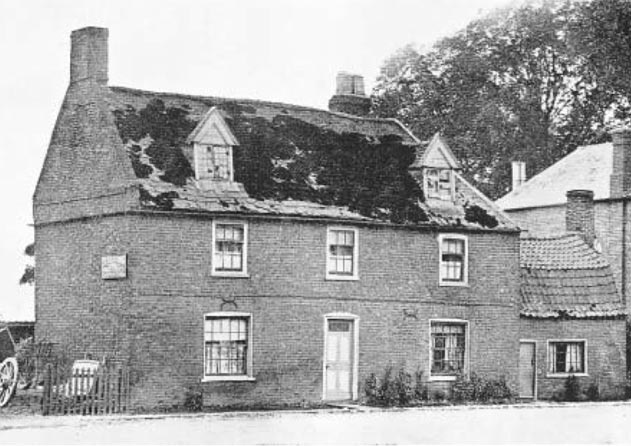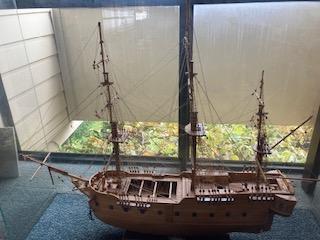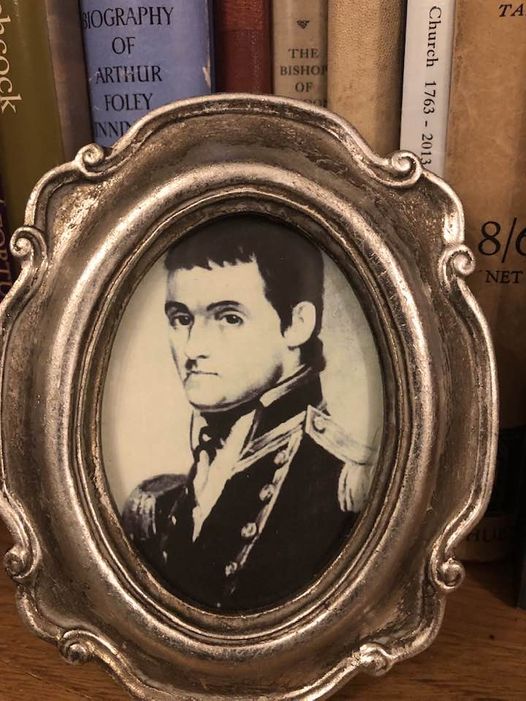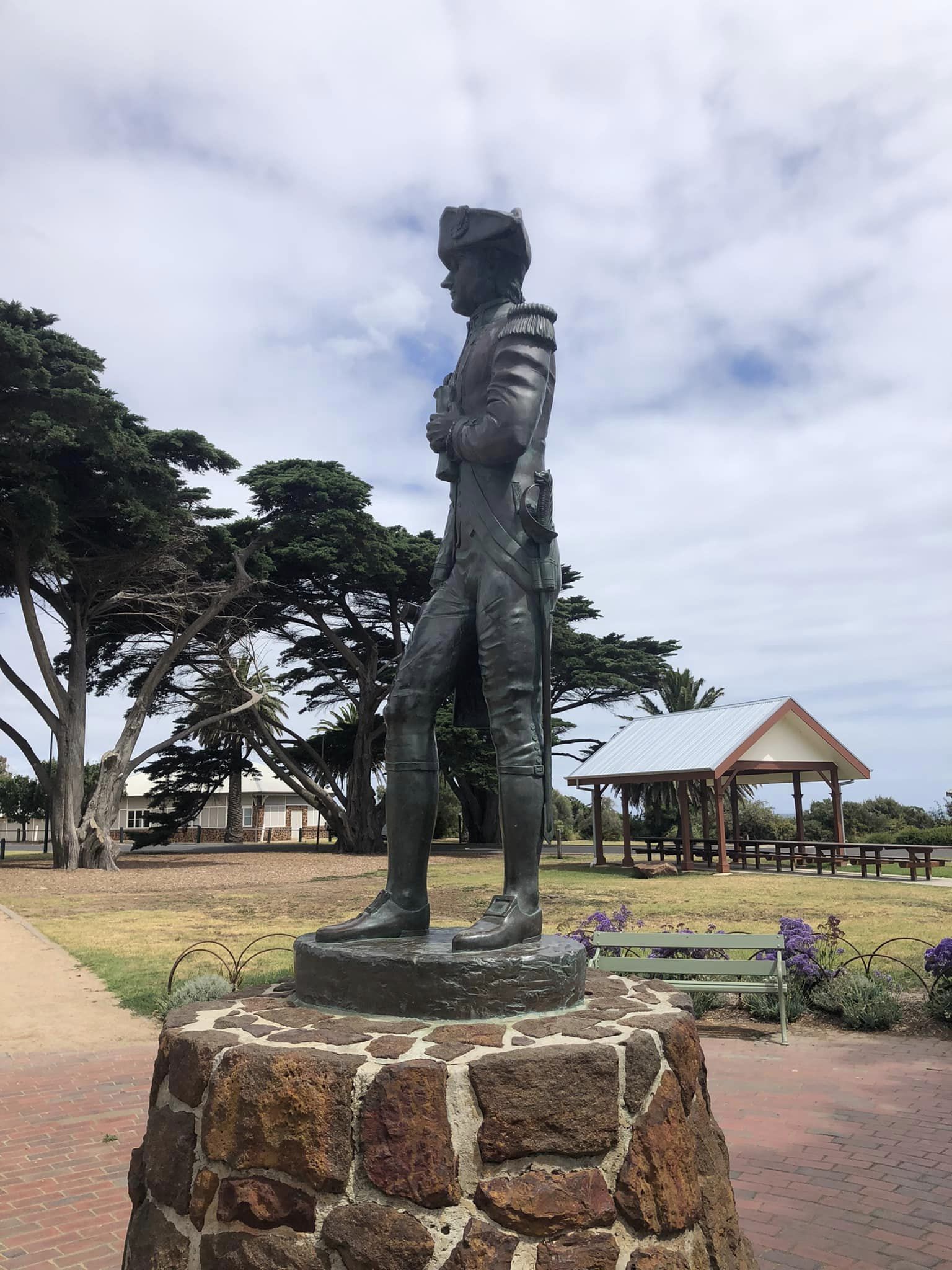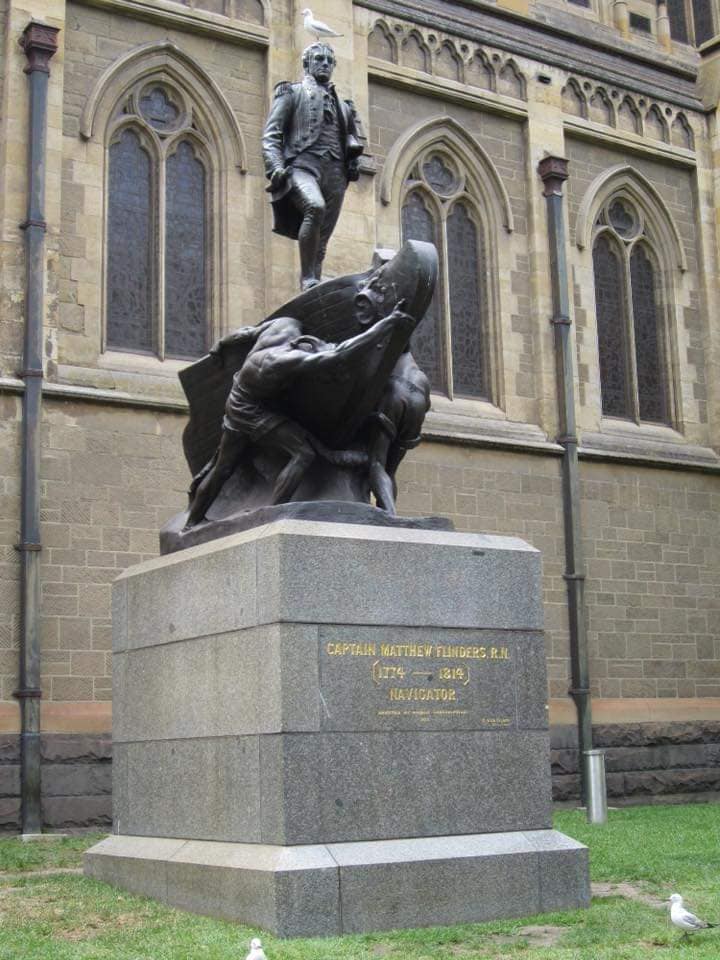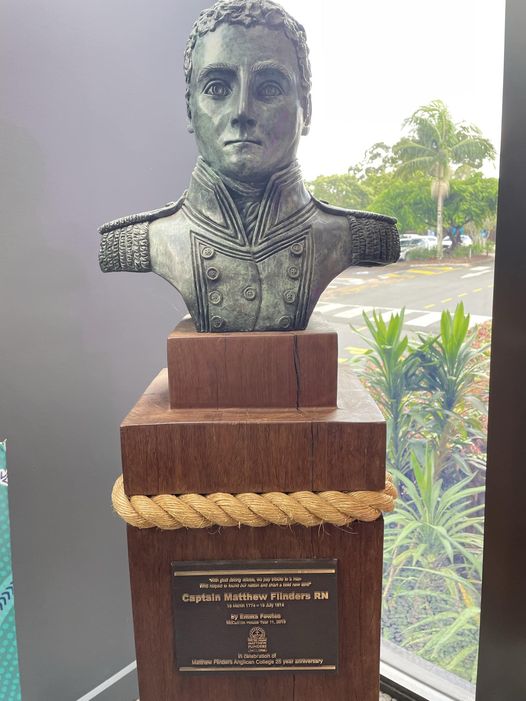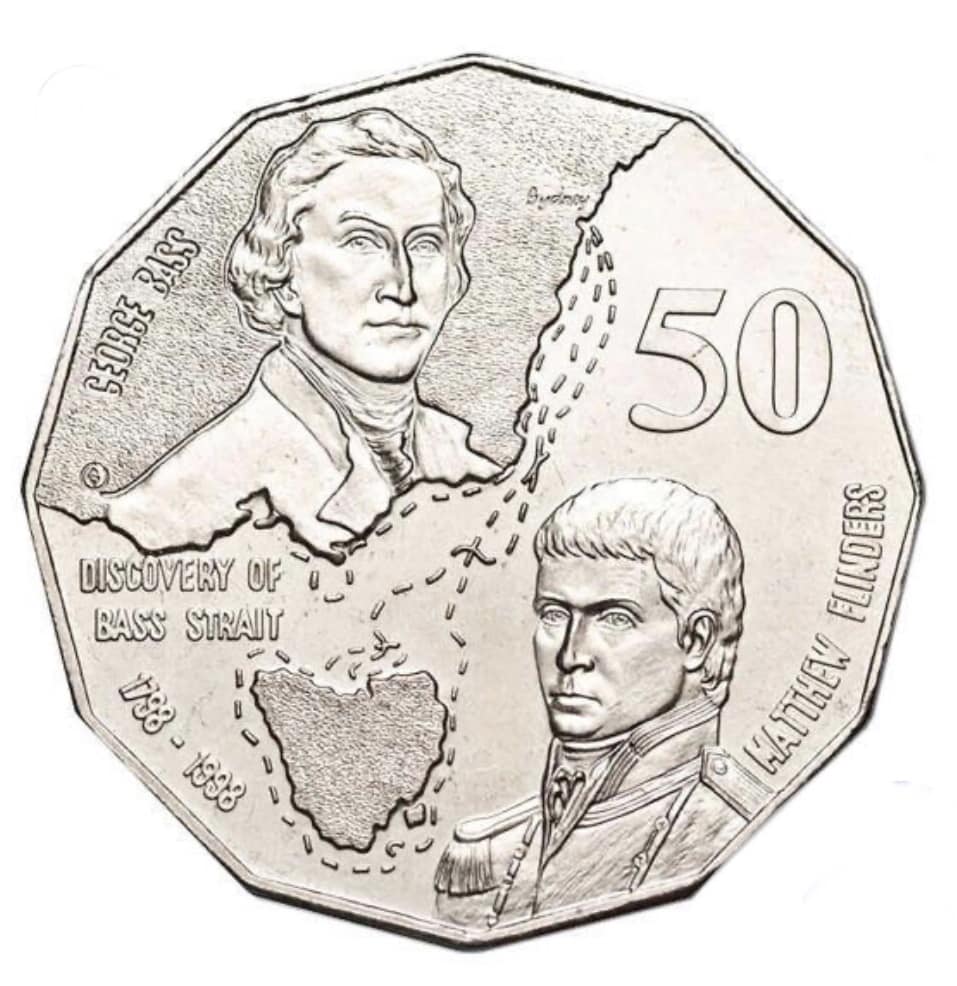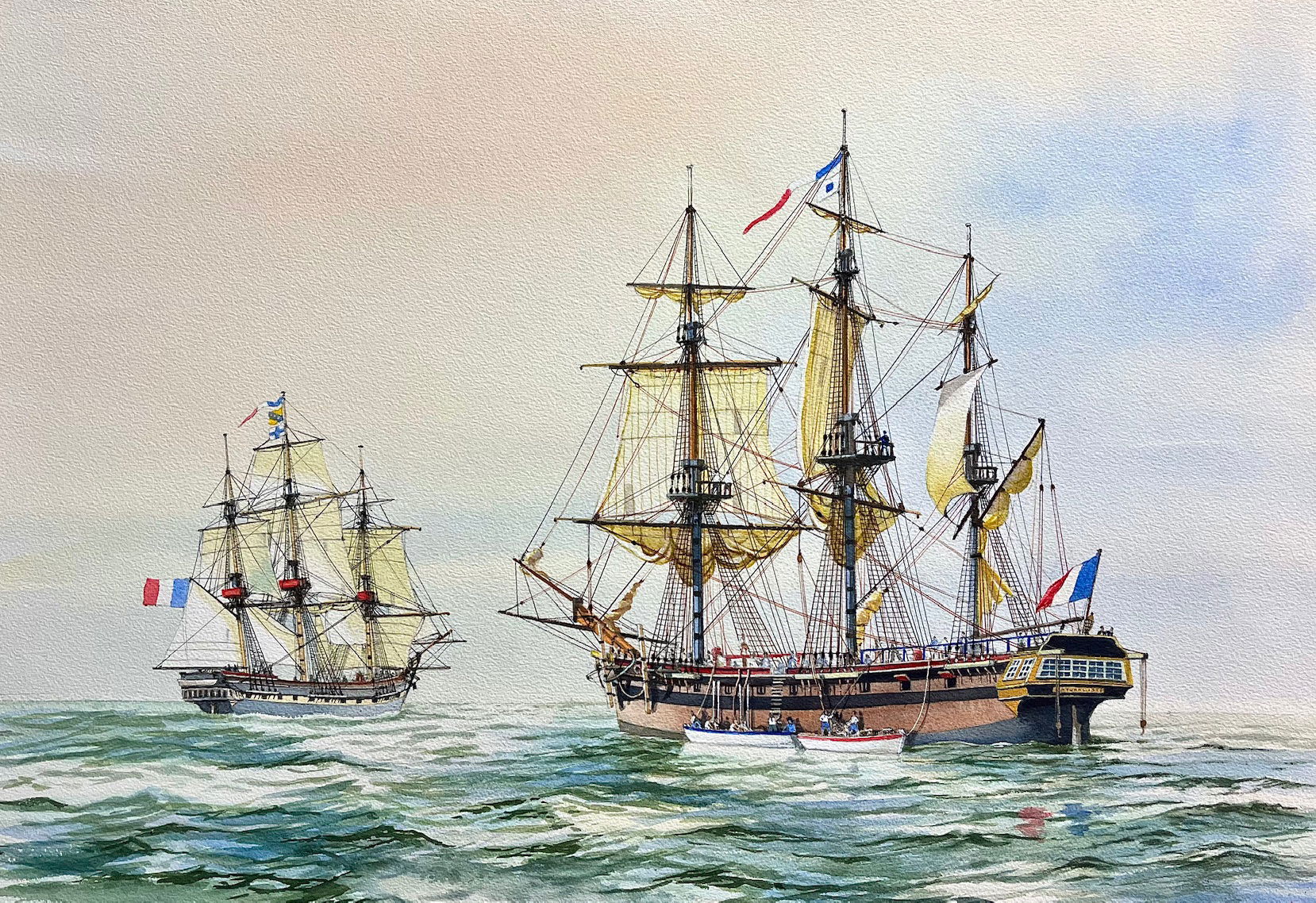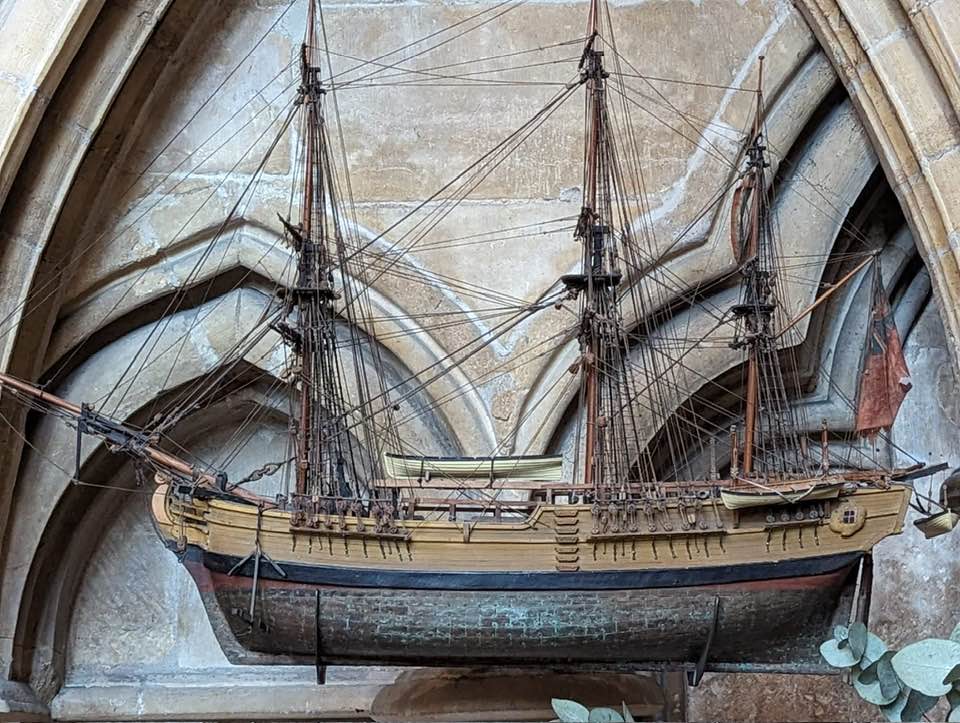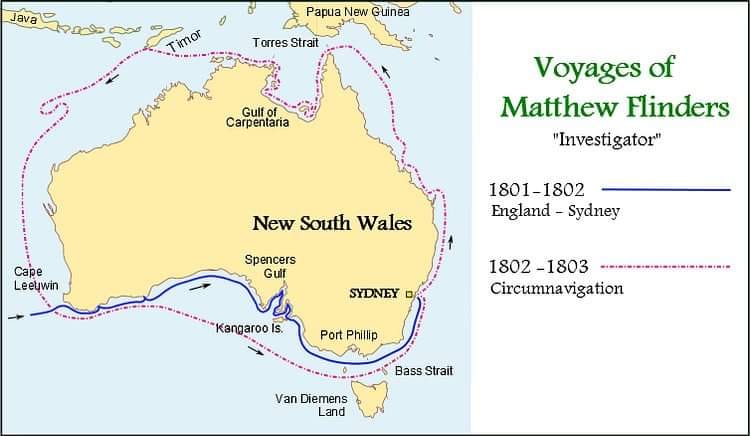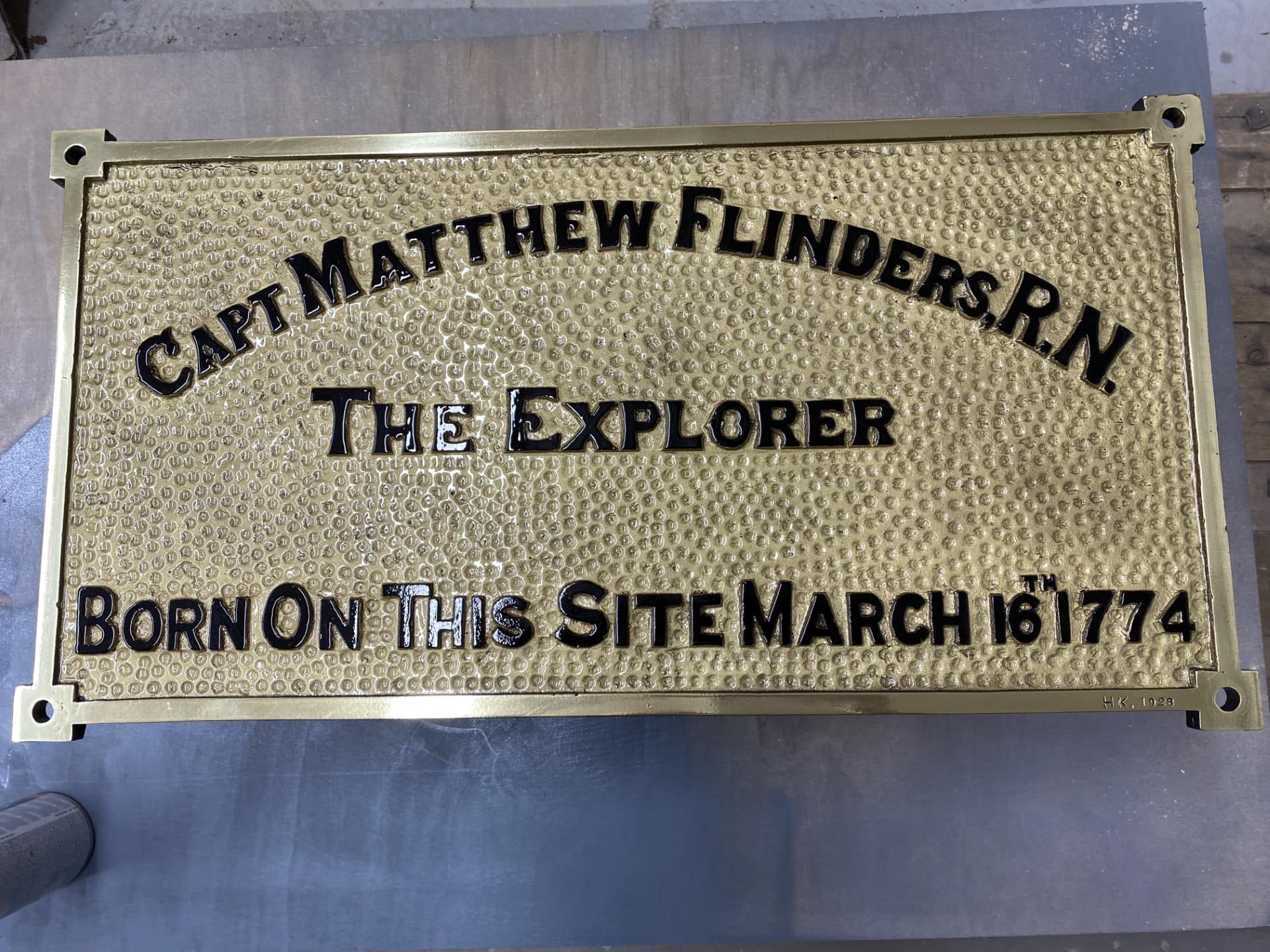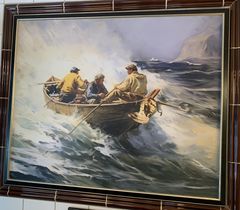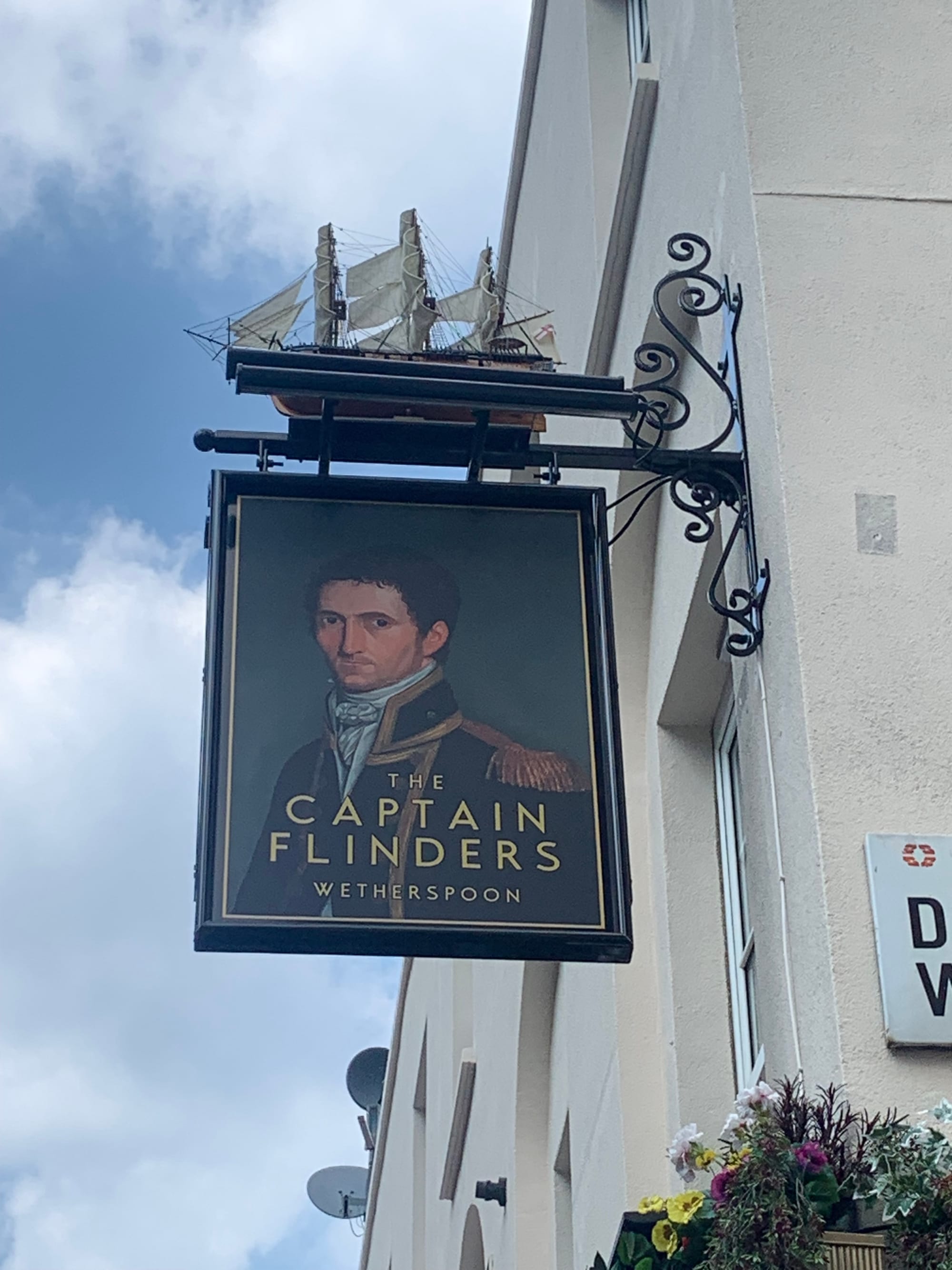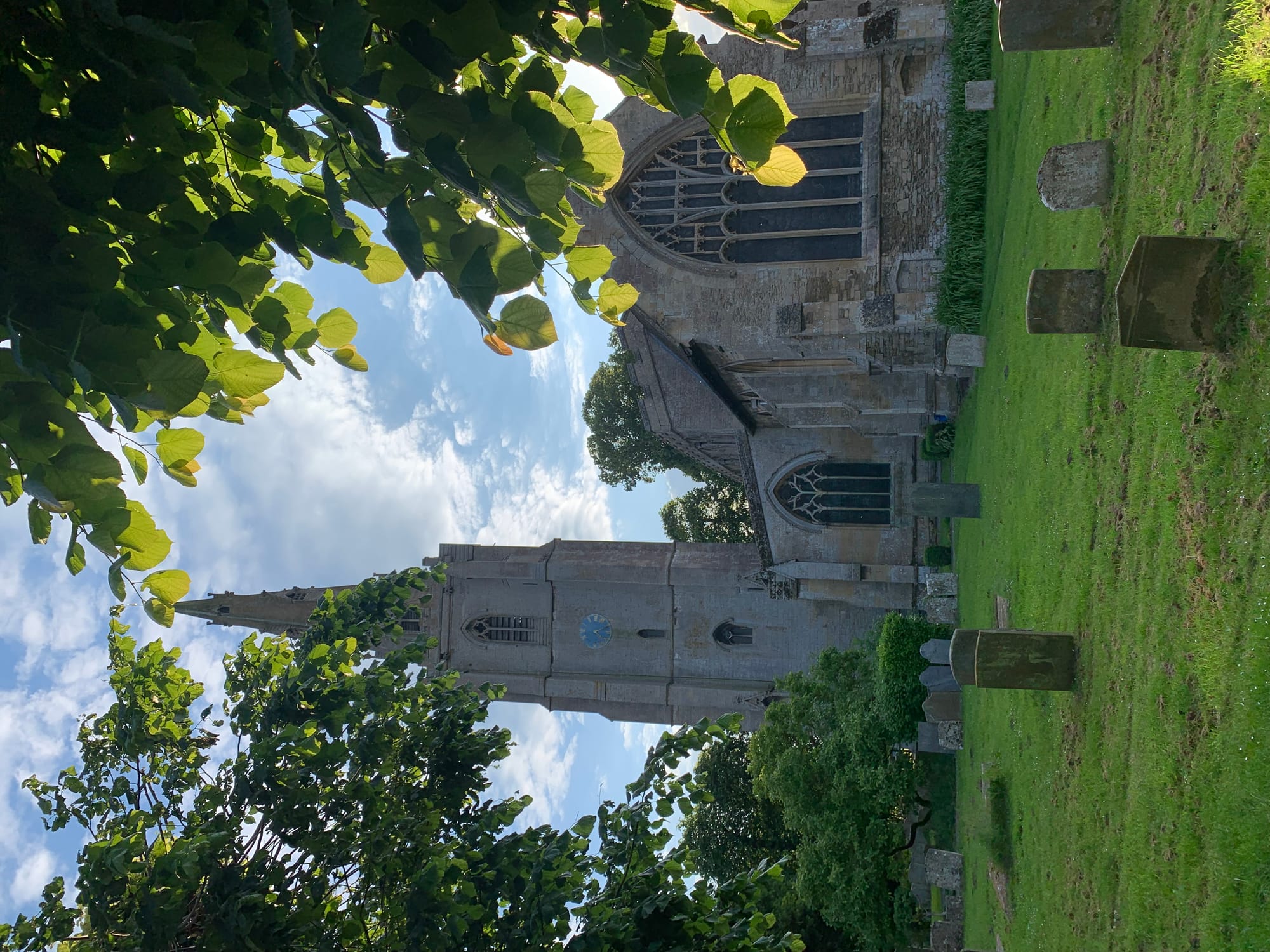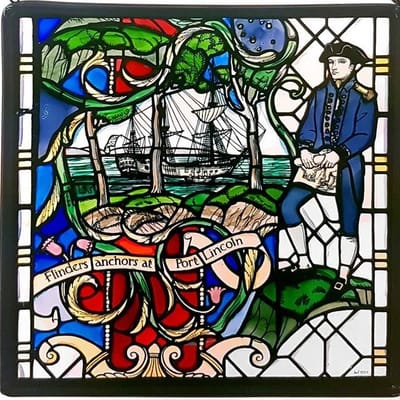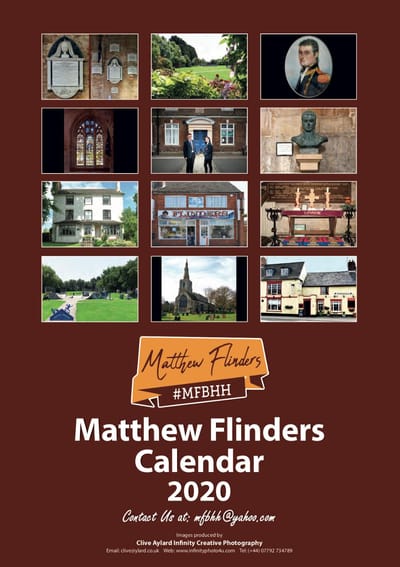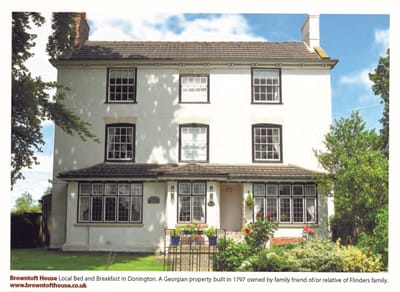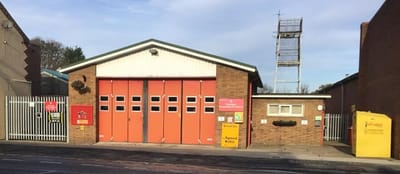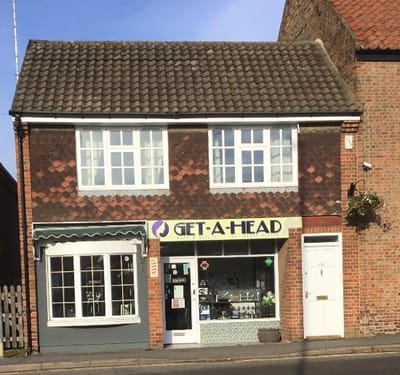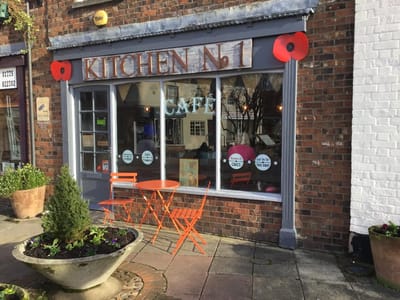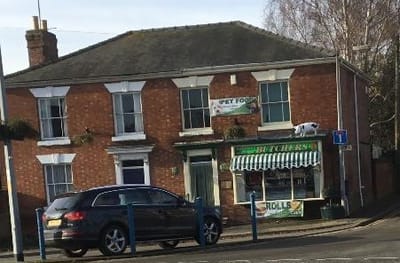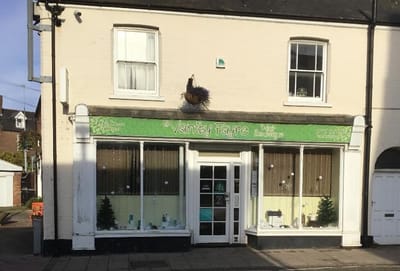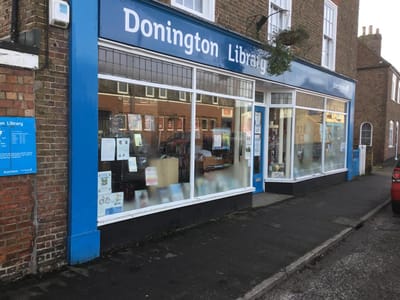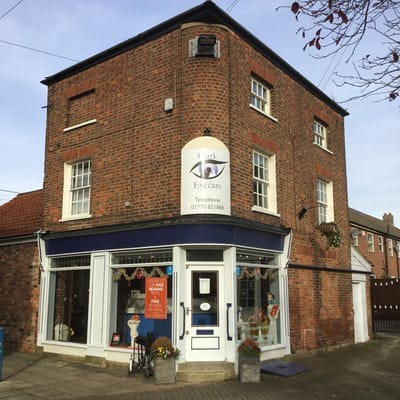COMMEMORATIVE FLOWERS FOR CAPTAIN MATTHEW FLINDERS
13TH JULY 2024 for the “BRING HIM HOME” DAY
Kathryn White
 From Kathryn White of Sanctuary Point NSW near Jervis Bay - the Commemorative Native Australian Flowers standing in the Sea.
From Kathryn White of Sanctuary Point NSW near Jervis Bay - the Commemorative Native Australian Flowers standing in the Sea.
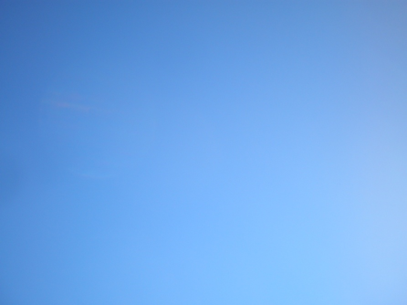 Here in the Jervis Bay area on the South Coast of New South Wales where the waters of the Tasman Sea flow into Jervis Bay and St Georges Basin, from Sussex Inlet my home of Sanctuary Point is on its shores.
Here in the Jervis Bay area on the South Coast of New South Wales where the waters of the Tasman Sea flow into Jervis Bay and St Georges Basin, from Sussex Inlet my home of Sanctuary Point is on its shores.
The 13th July 2024 was a bright and sunny day as can be seen by the photograph, above, for the little contribution for the “Bring Him Home” day. An Australian Native Flower Commemoration for Captain Matthew Flinders – who sailed past our shores on his voyages of exploration.
The water sparkled with sunshine and as we are 9 hours ahead, I chose sunrise time in Donington to place the Flowers in the Sea. I also placed them afterwards, facing the Tasman Sea to be there for the “Bring Him Home” Service at Donington, his place of birth and final resting place in St Mary and Holyrood Church.
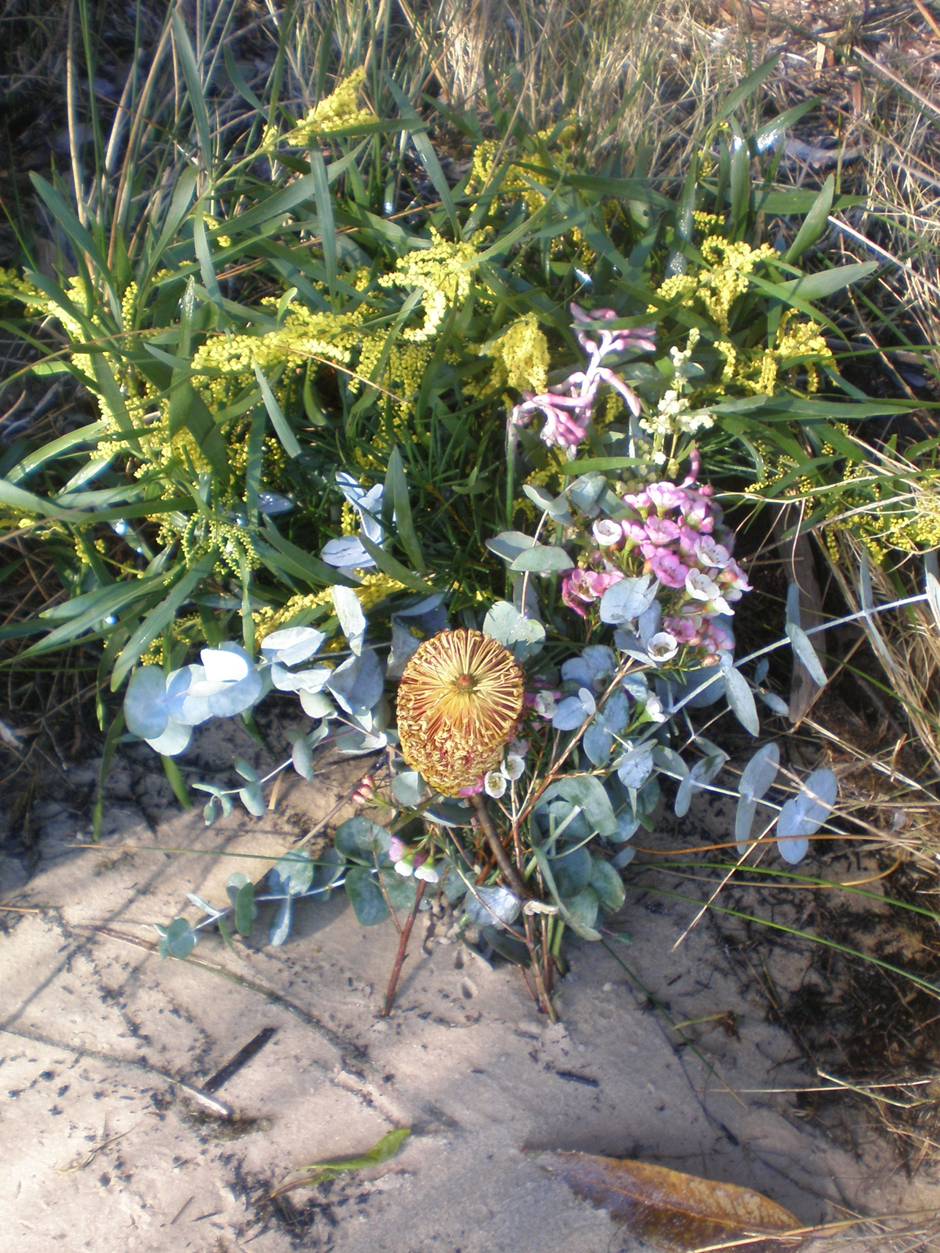
I thought a little background to the chosen Australian Native flowers may be of interest also:

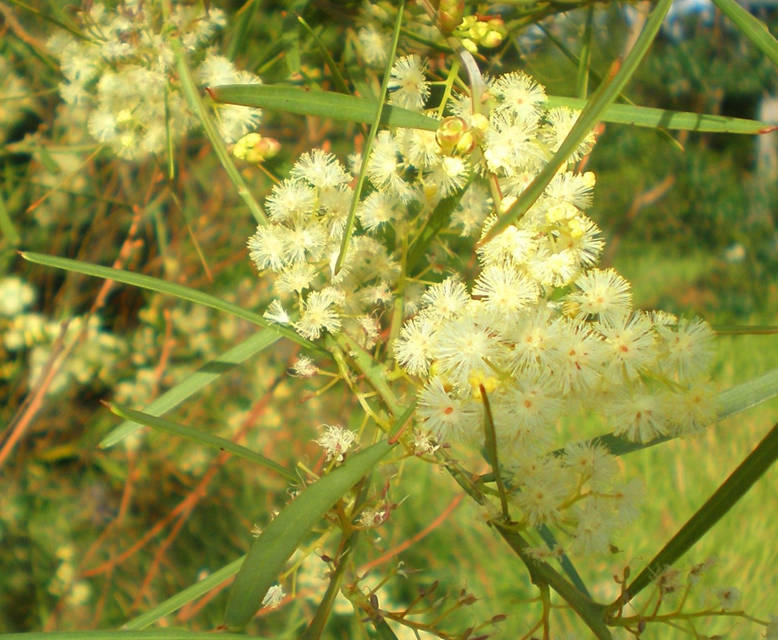 The Golden Wattle, Australia’s National Floral Emblem is now just coming into bloom and how fitting for 13th July 2024 and freshly picked from bushland (above) at Jervis Bay.
The Golden Wattle, Australia’s National Floral Emblem is now just coming into bloom and how fitting for 13th July 2024 and freshly picked from bushland (above) at Jervis Bay.
Picked from this native Wattle Tree (Acacia Longifolia) from Sanctuary Point my home (near Jervis Bay) just in bloom and grows prolifically in our area of the South Coast of New South Wales.
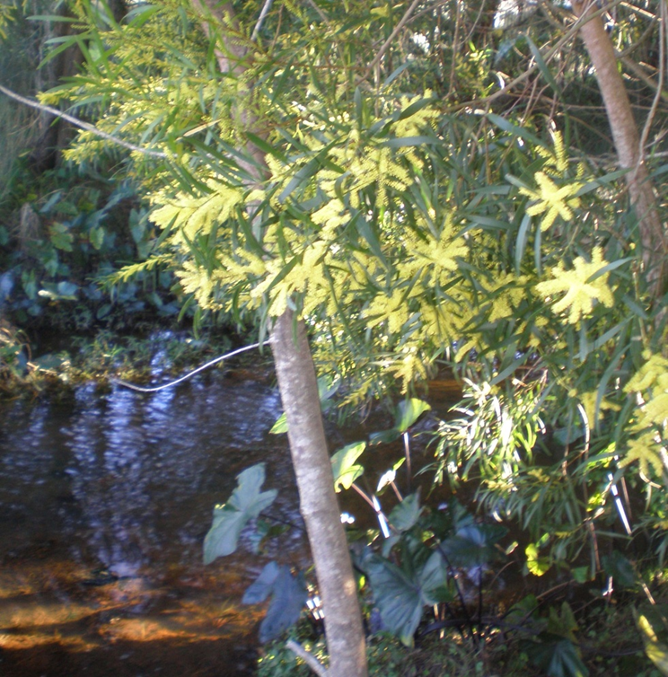 The silver leaved mountain gum (Eucalyptus pulverulenta) is also a native of southern New South Wales.
The silver leaved mountain gum (Eucalyptus pulverulenta) is also a native of southern New South Wales.
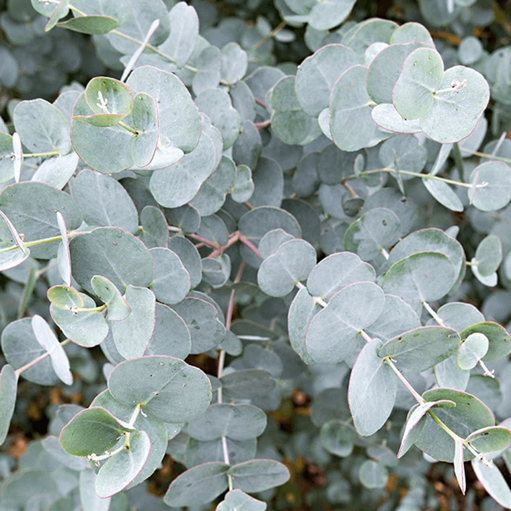
This species of Banksia in my hat, is botanically named Banksia ericifolia, but is also known as the Lantern Banksia. Part of the Proteaceae family, it is a native plant that occurs largely in New South Wales across the eastern coast. Many banksias grow in our area and this type was collected by Joseph Banks, aboard the Endeavour, Captained at the time, by Lieut. James Cook in 1770.

Captain Matthew Flinders especially admired Capt. James Cook. And why is the specimen photographed in a somewhat similar style to a Cabbage Tree Hat? Because shortly after the first landing at Moreton Bay in Queensland, it is recorded that Captain Matthew Flinders wore a cabbage-tree hat himself! A cabbage tree hat (also known as a cabbage palm hat) is a hat made from the cabbage tree palm (Livistona australis.)
It is known as the first distinctively Australian headwear in use for the protection from the sun. The process involved boiling, then drying, and finally bleaching the leaves and it was a finely woven natural straw coloured hat with a high tapering domed crown.
This same native Specimen was collected by Joseph Banks aboard the Endeavour, in 1770 at Botany Bay - Banksias are named after him.

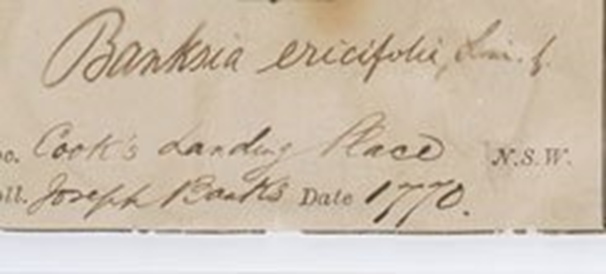
WESTERN AUSTRALIAN NATIVE PLANTS REPRESENTED
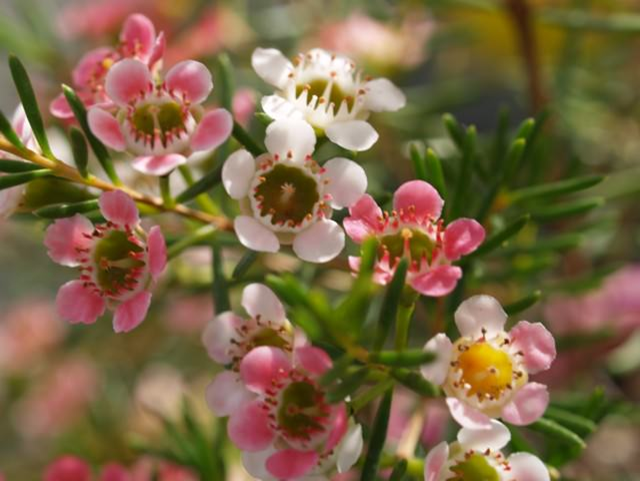 Geraldton waxflower or Chamelaucium waxflower are a species of the myrtle and is a wildflower native only to Western Australia and this flower represents Capt. Matthew Flinders vast exploration and circumnavigation of Australia from western to the eastern shores.
Geraldton waxflower or Chamelaucium waxflower are a species of the myrtle and is a wildflower native only to Western Australia and this flower represents Capt. Matthew Flinders vast exploration and circumnavigation of Australia from western to the eastern shores.
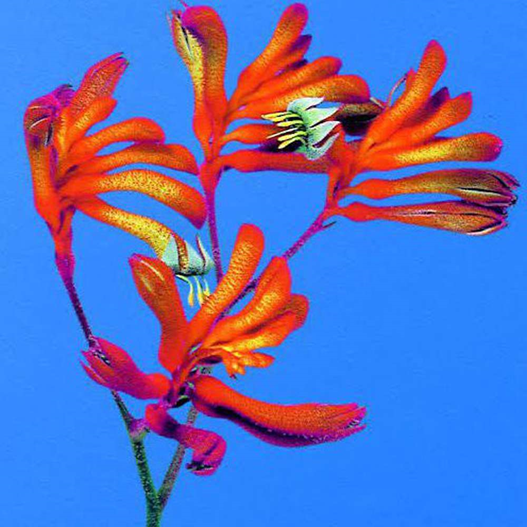 Kangaroo Paws (Anigozanthos) are also native only in the southwest of Western Australia.
Kangaroo Paws (Anigozanthos) are also native only in the southwest of Western Australia.
 MAP SHOWING SANCTUARY POINT - ST GEORGES BASIN on the SOUTH COAST OF EASTERN AUSTRALIA (left) AND JERVIS BAY THROUGH POINT PERPENDICULAR AND GOVERNOR HEAD
MAP SHOWING SANCTUARY POINT - ST GEORGES BASIN on the SOUTH COAST OF EASTERN AUSTRALIA (left) AND JERVIS BAY THROUGH POINT PERPENDICULAR AND GOVERNOR HEAD
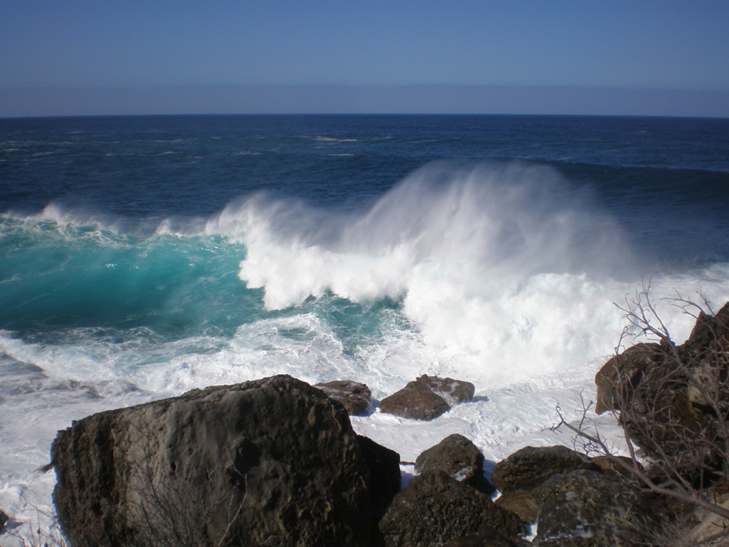 Photograph taken looking out to the Tasman Sea from Governors Head Jervis Bay by Kathryn White - where Captain Matthew Flinders sailed on his voyages of exploration.
Photograph taken looking out to the Tasman Sea from Governors Head Jervis Bay by Kathryn White - where Captain Matthew Flinders sailed on his voyages of exploration.
IN MEMORY OF CAPTAIN MATTHEW FLINDERS
Sea-Fever
BY JOHN MASEFIELD
I must go down to the seas again, to the lonely sea and the sky,
And all I ask is a tall ship and a star to steer her by;
And the wheel’s kick and the wind’s song and the white sail’s shaking,
And a grey mist on the sea’s face and a grey dawn breaking.
I must go down to the seas again, for the call of the running tide
Is a wild call and a clear call that may not be denied;
And all I ask is a windy day with the white clouds flying,
And the flung spray and the blown spume and the sea-gulls crying.
I must go down to the seas again, to the vagrant gypsy life,
To the gull’s way and the whale’s way where the wind’s like a whetted knife;
And all I ask is a merry yarn from a laughing fellow-rover,
And quiet sleep and a sweet dream when the long trick’s over.
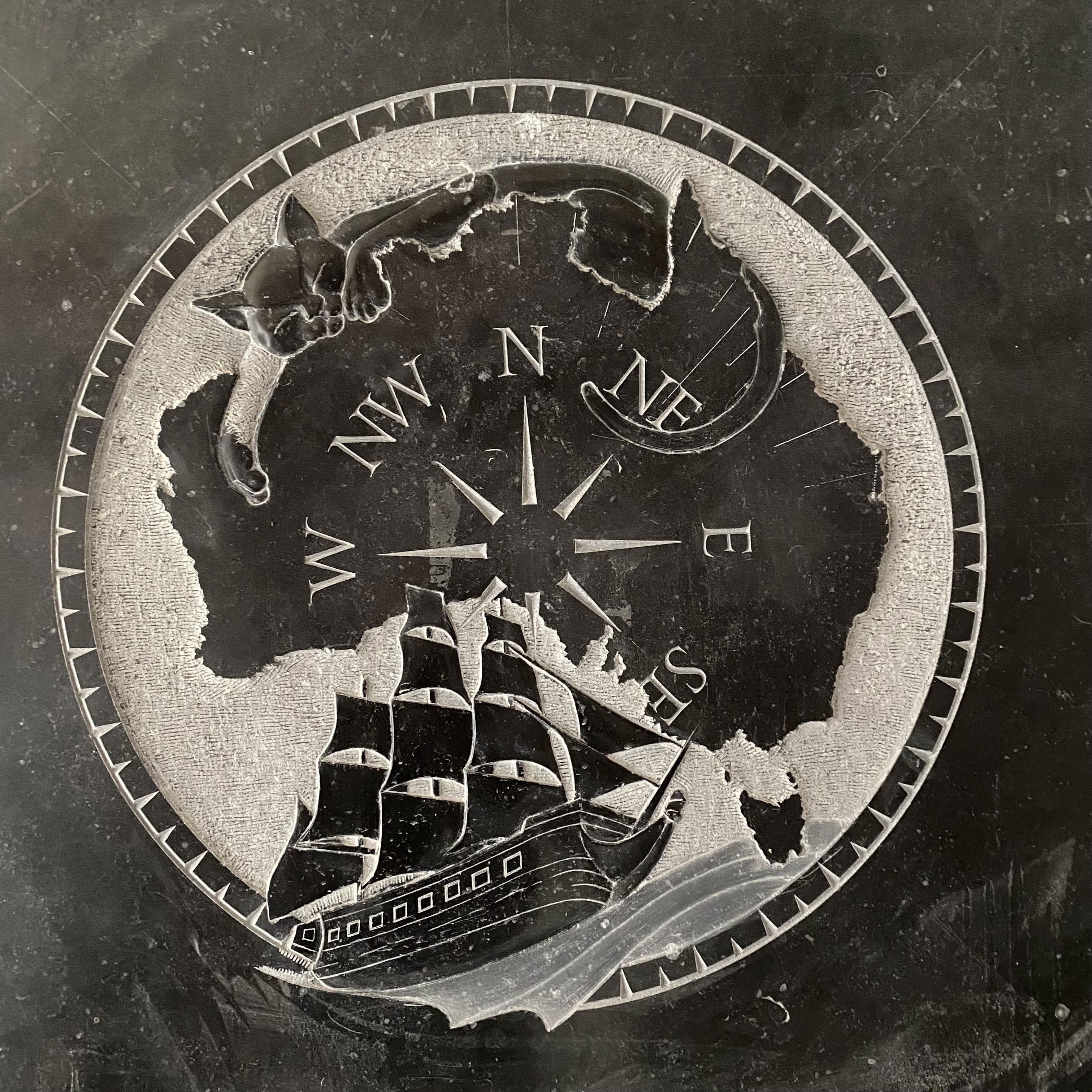

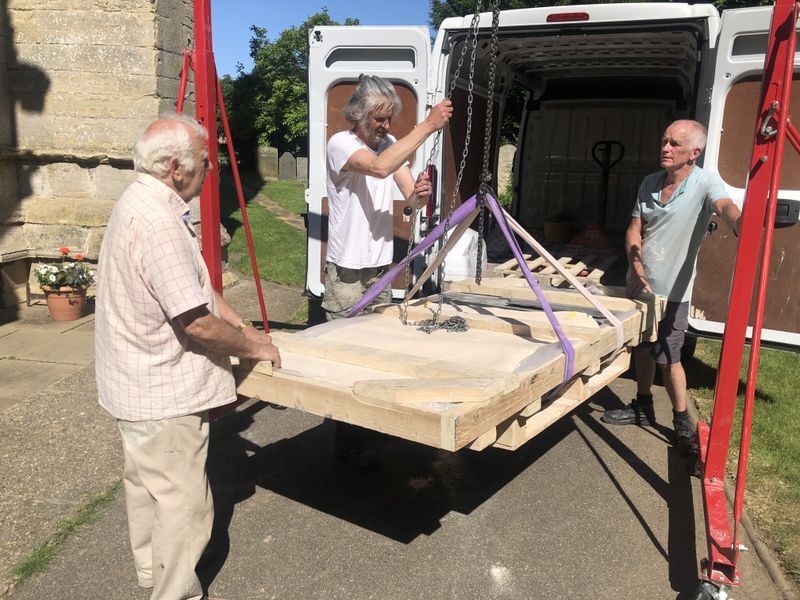
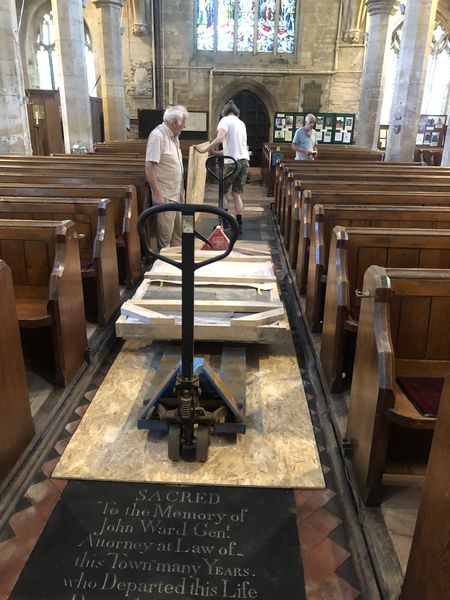
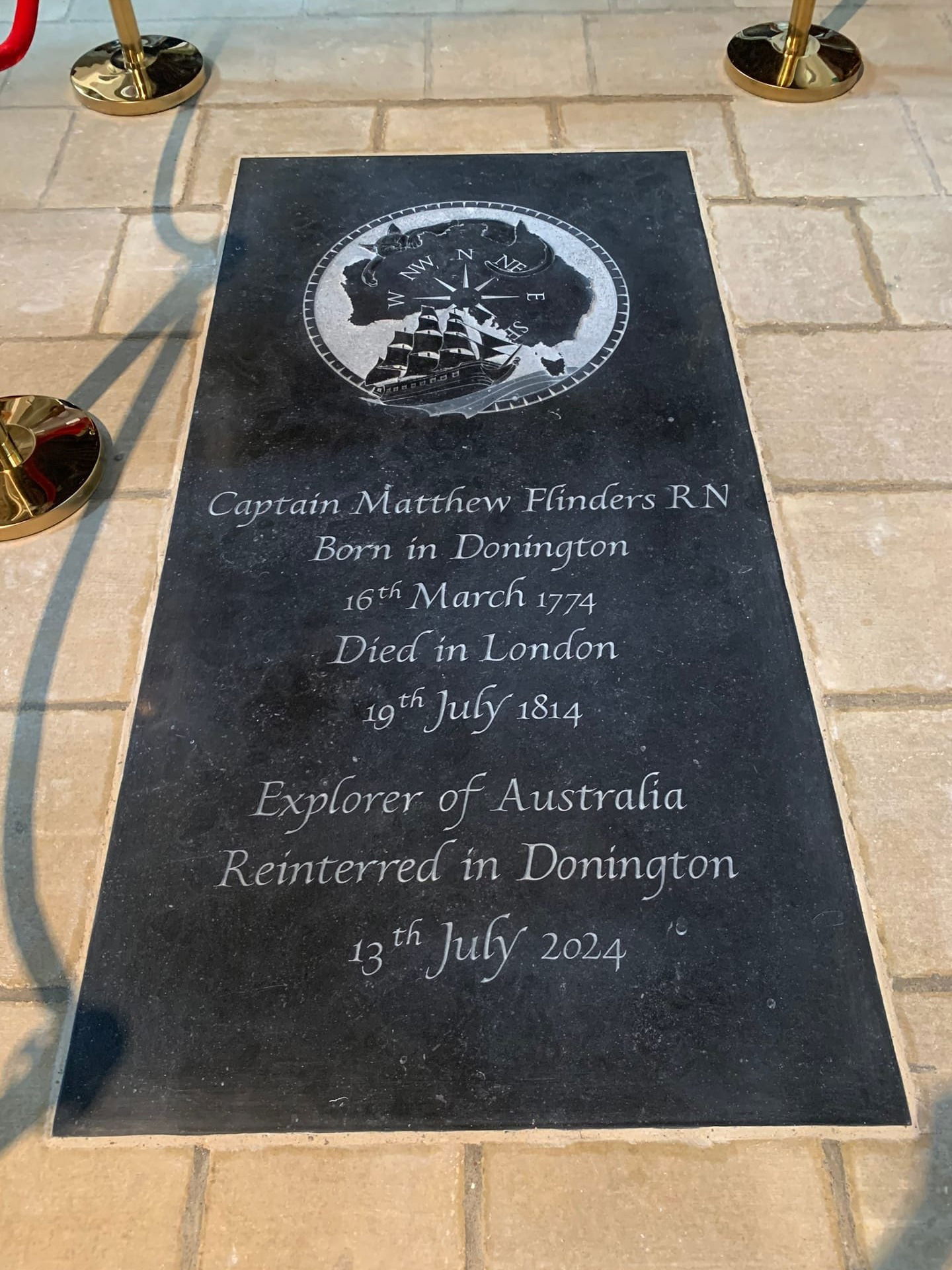
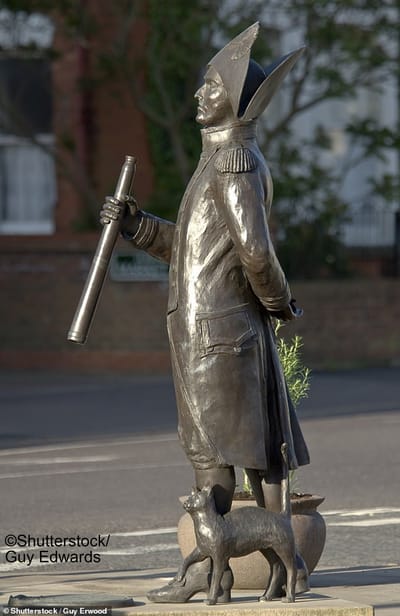
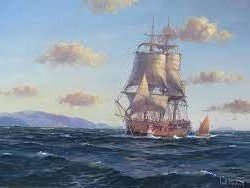
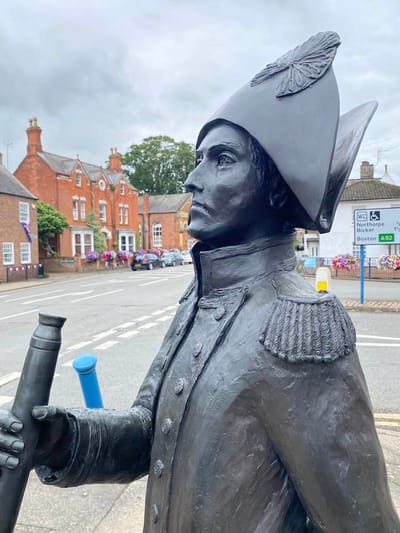
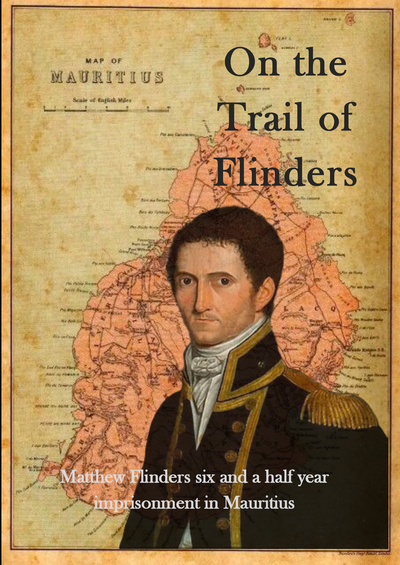
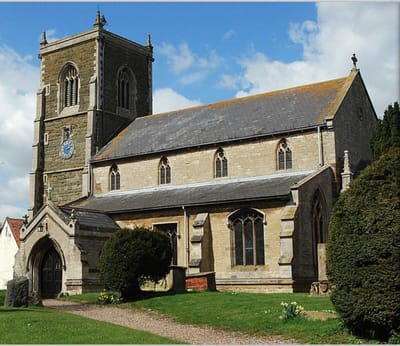
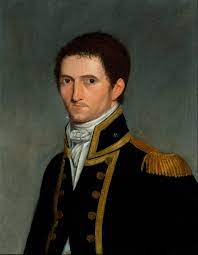

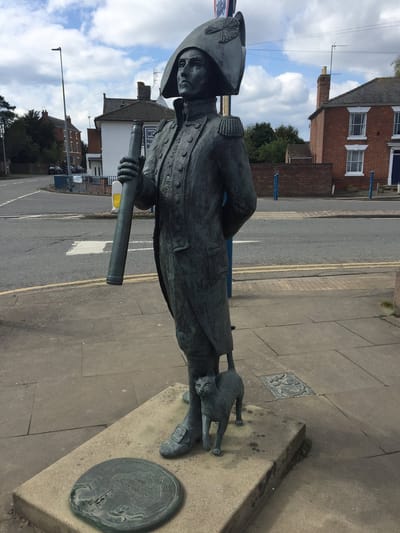
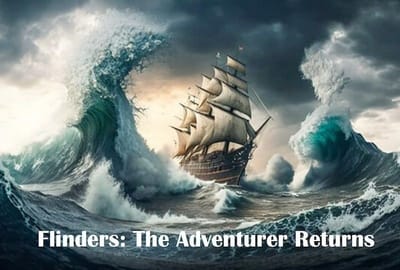
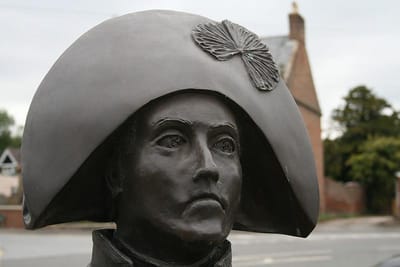
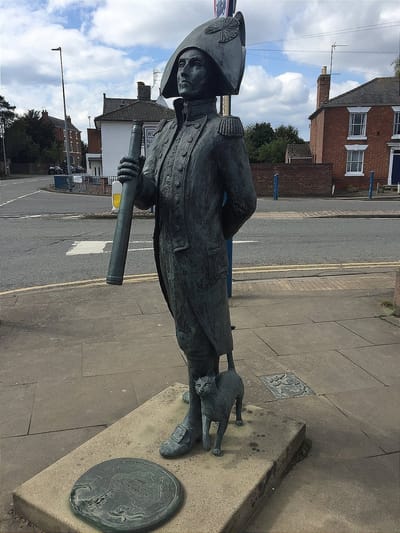
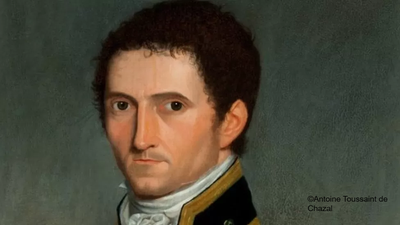
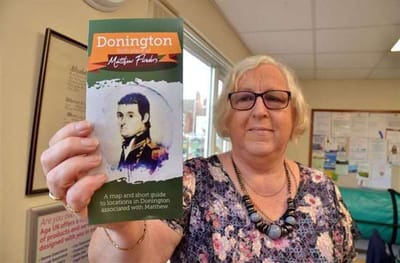
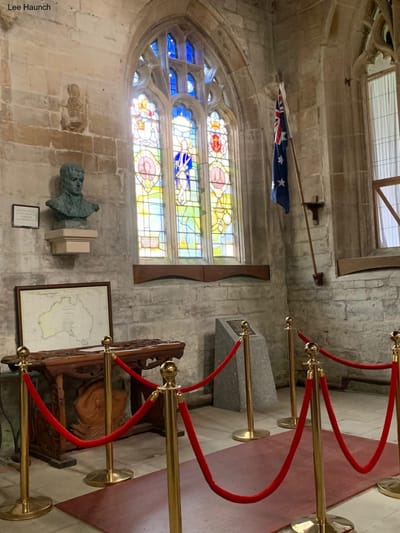


 The Group also has a very active Facebook Page, please click to learn more! -
The Group also has a very active Facebook Page, please click to learn more! - 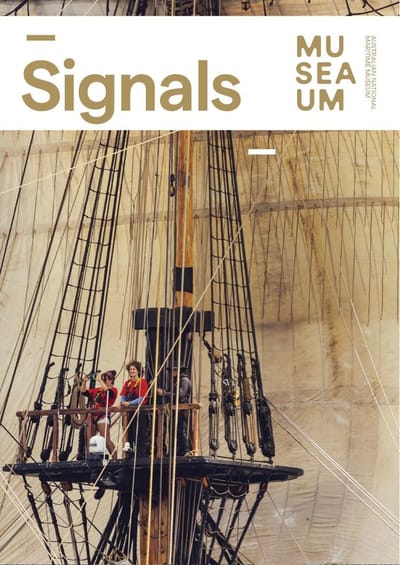



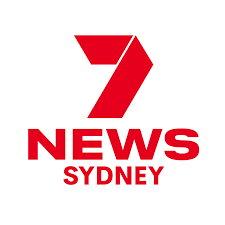

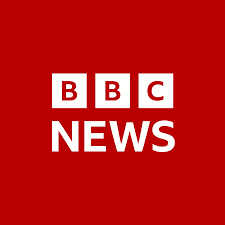

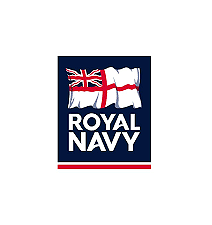

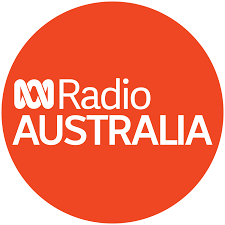
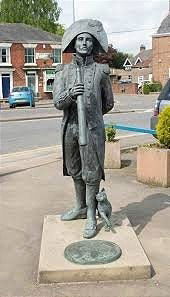
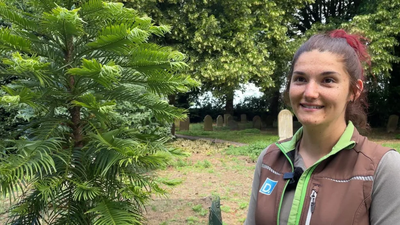
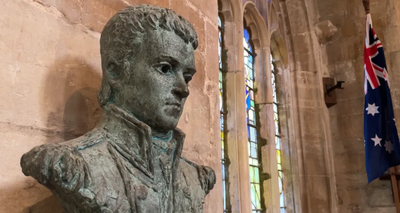
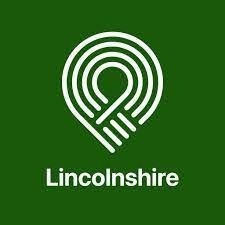
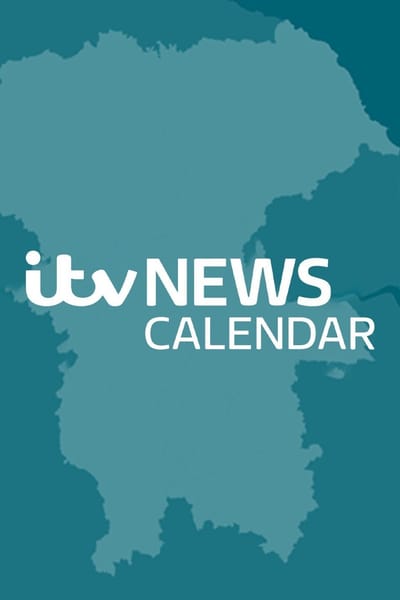
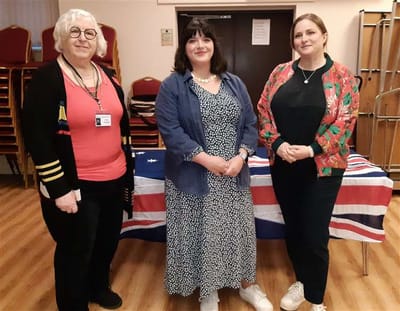

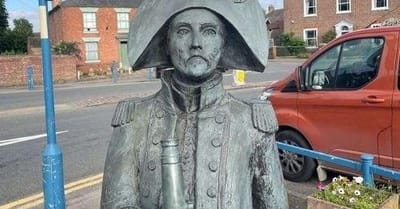
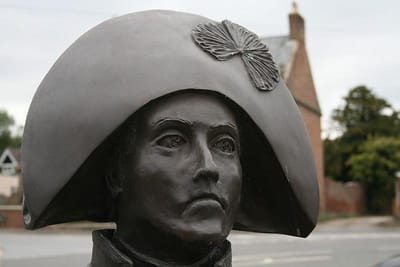
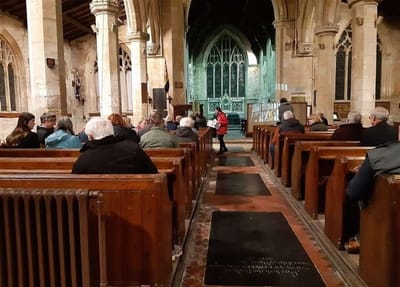
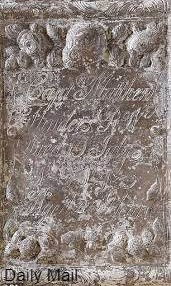
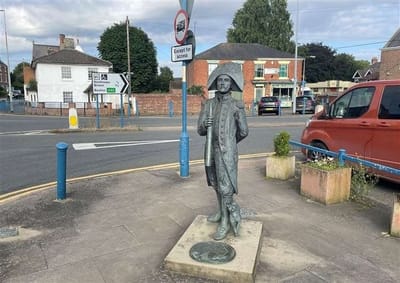
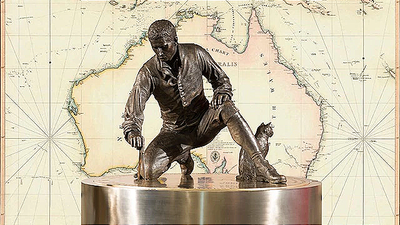
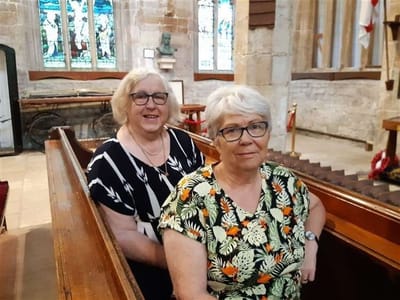

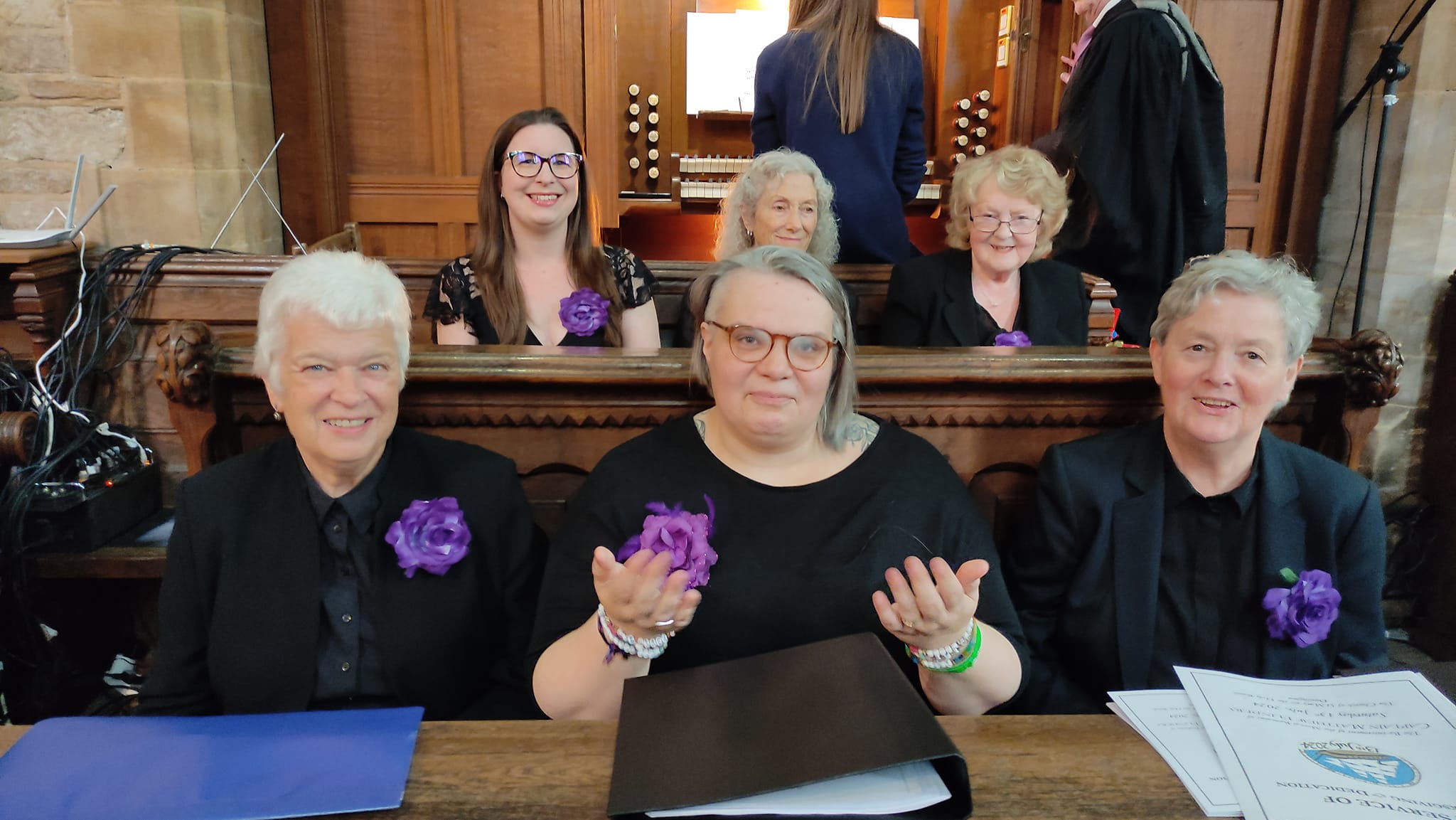
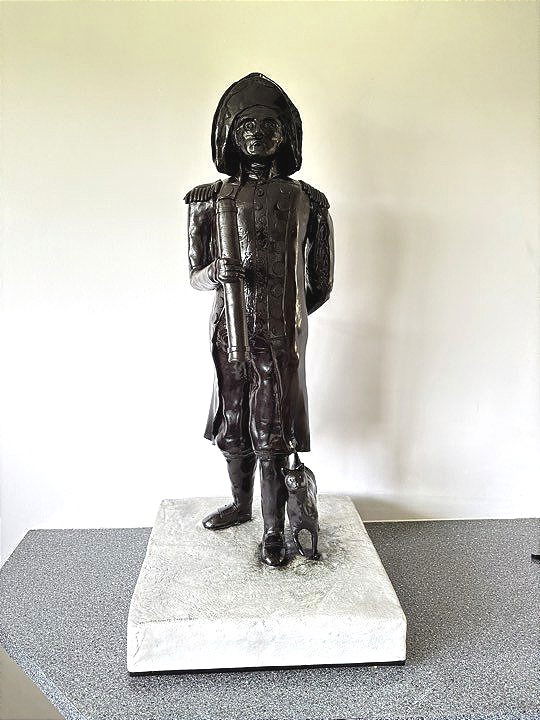
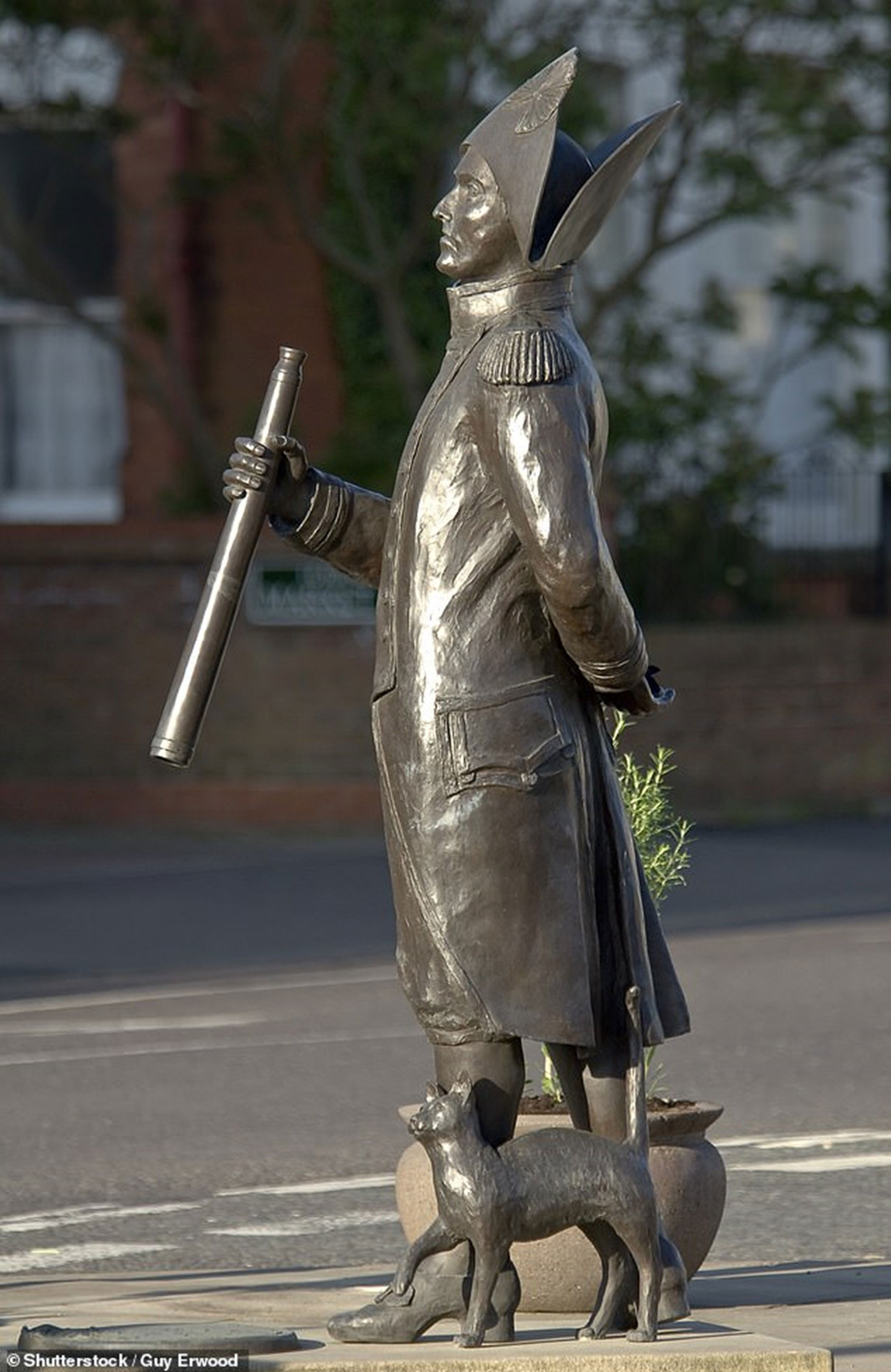

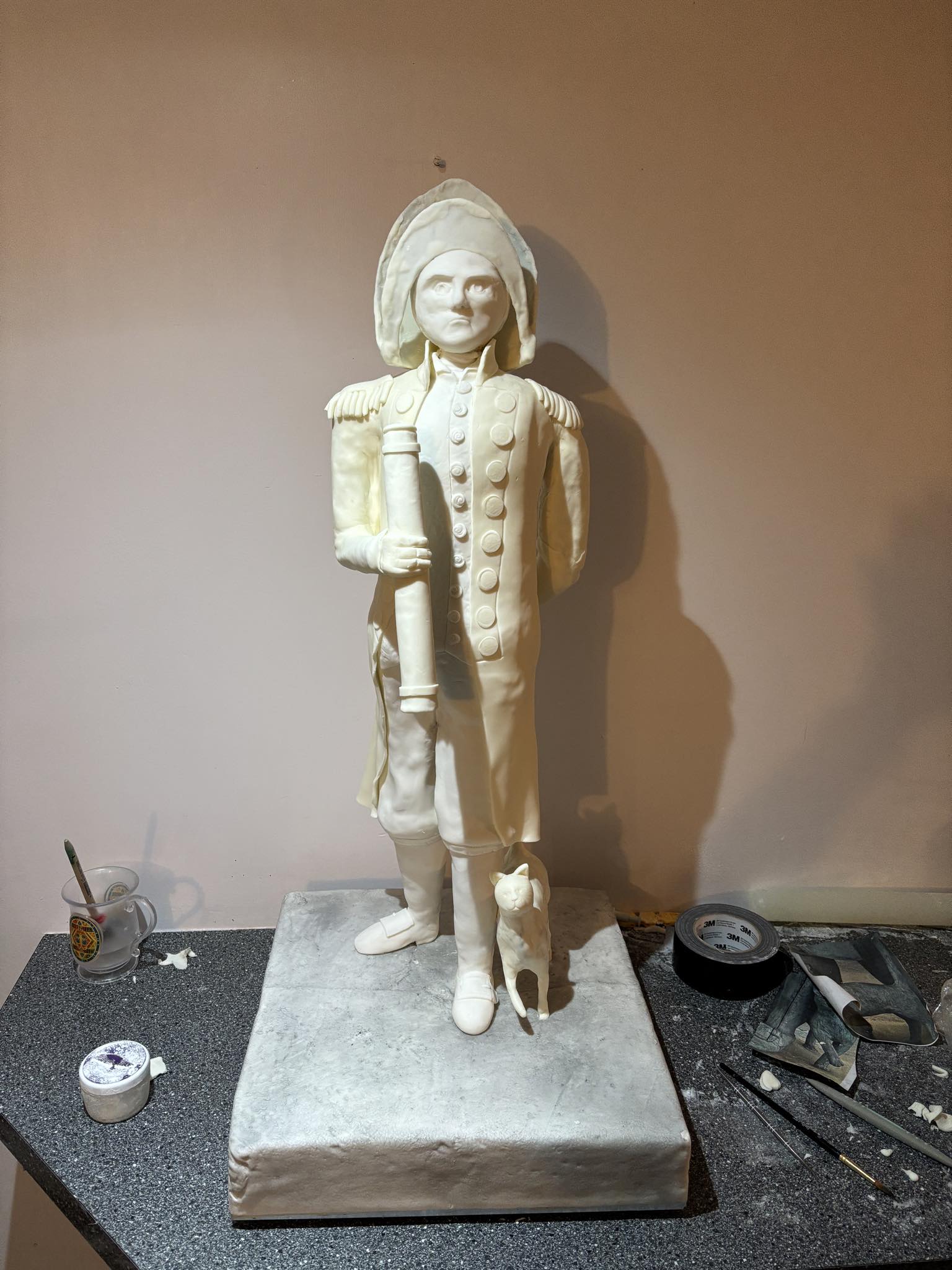
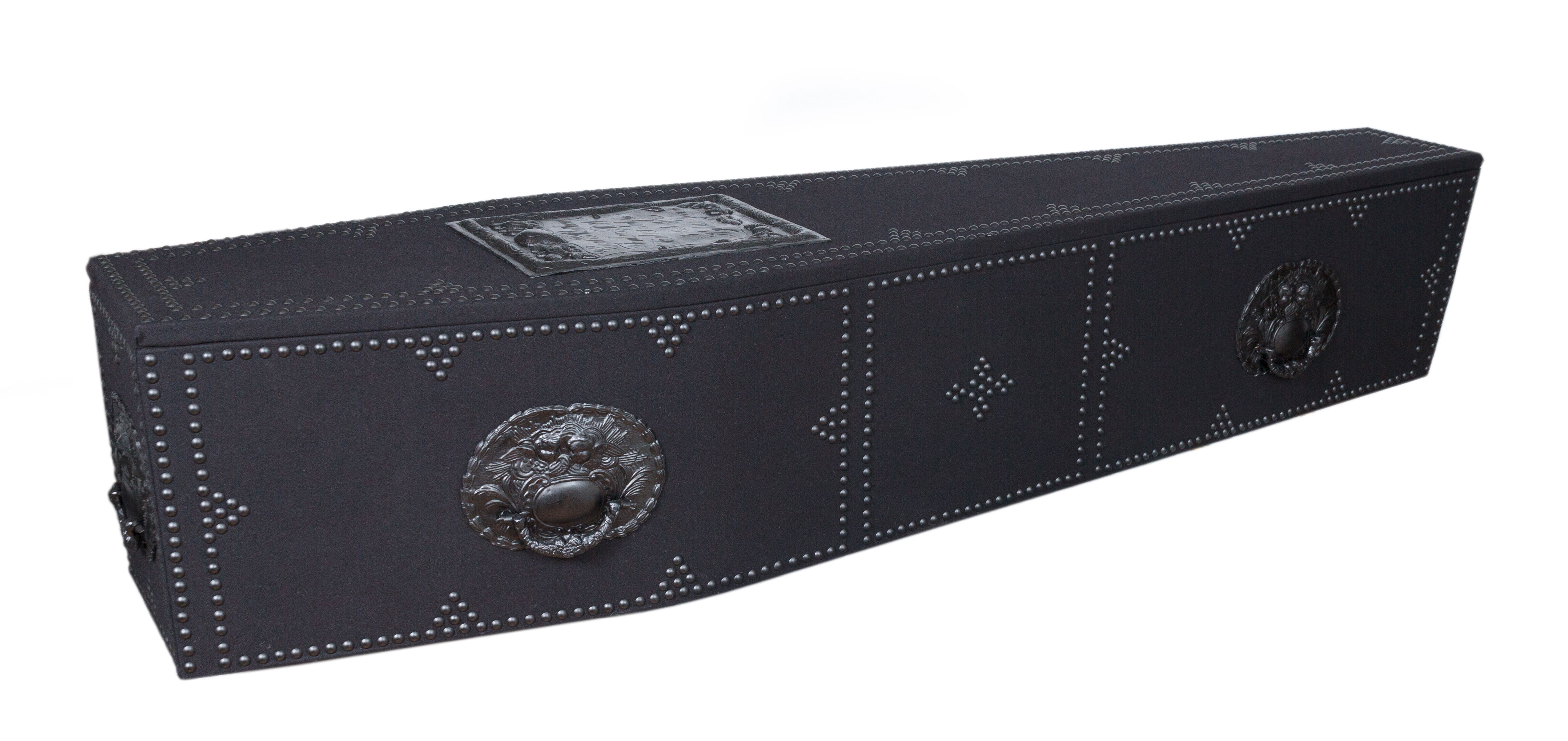

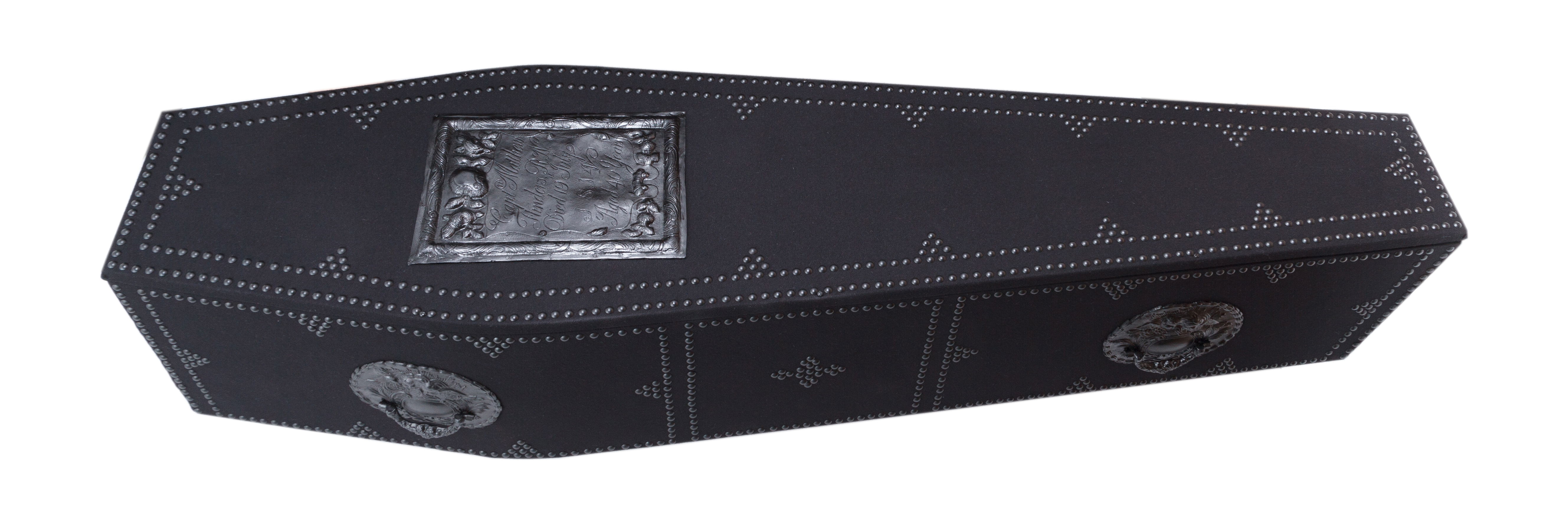
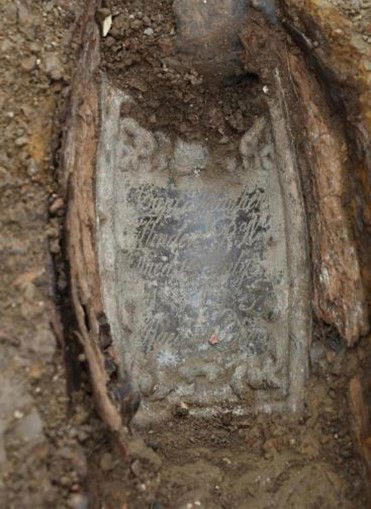
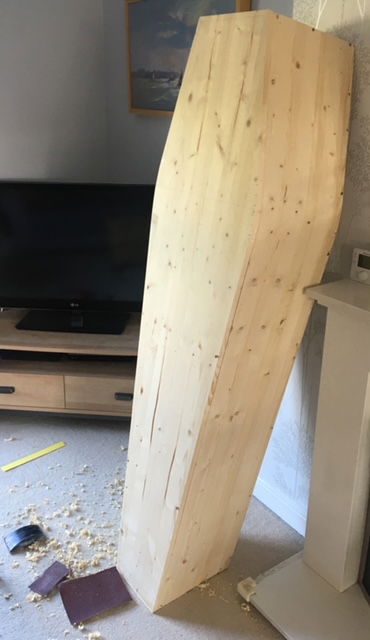
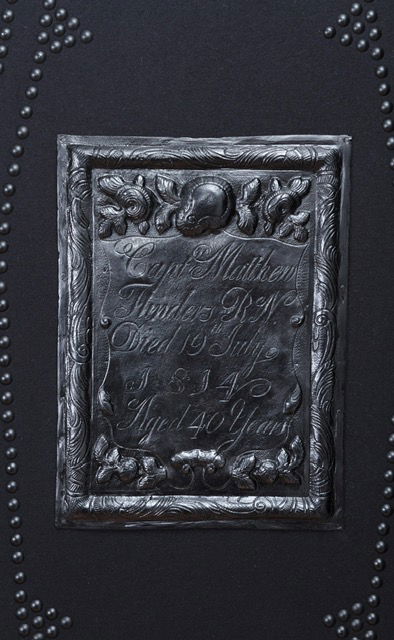
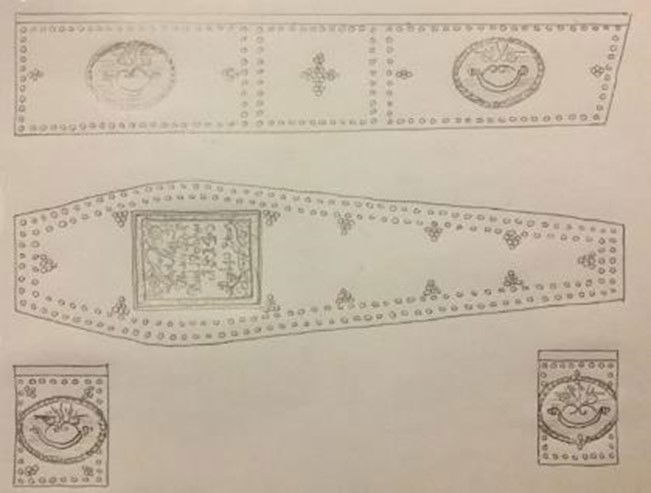
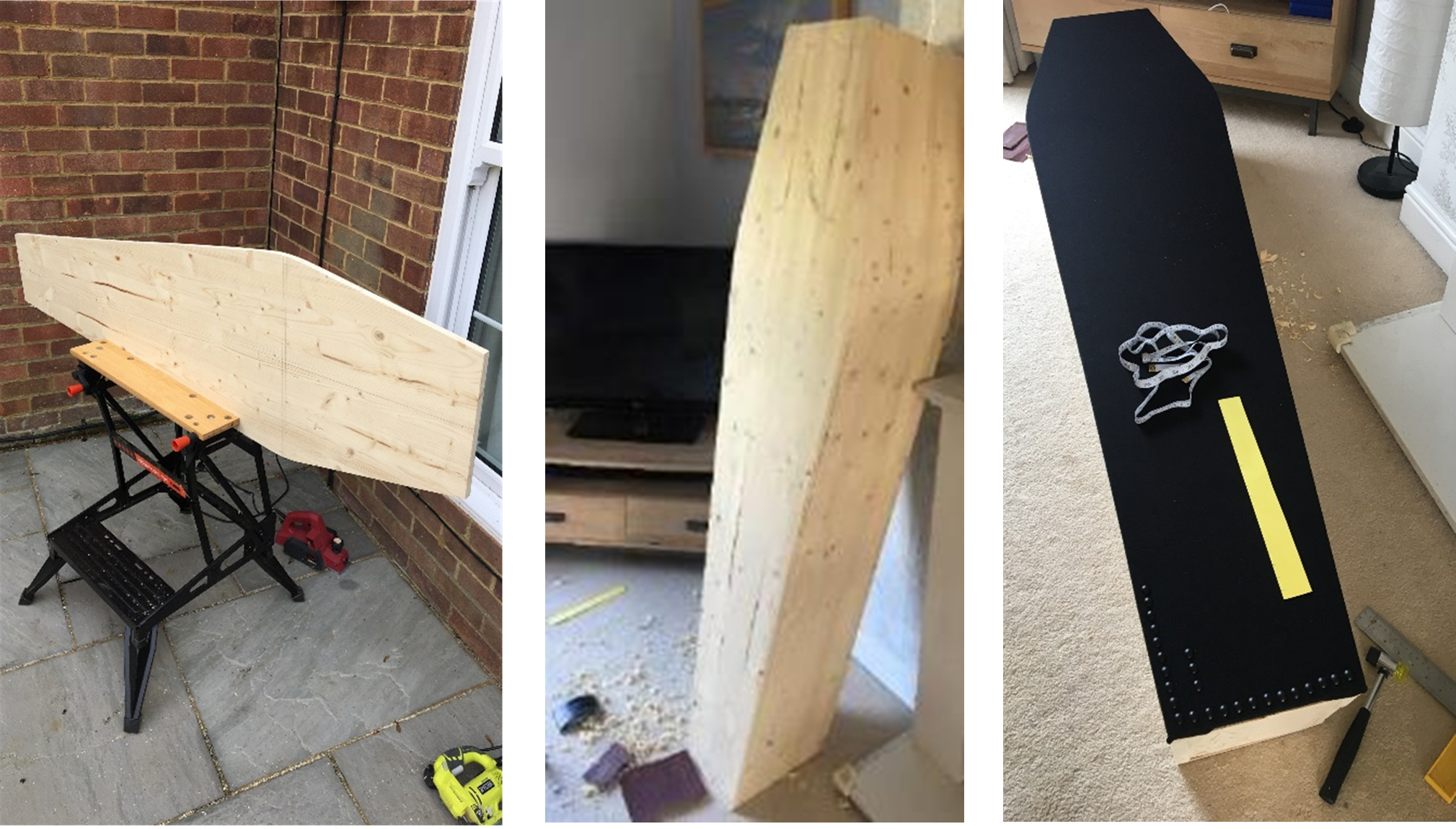
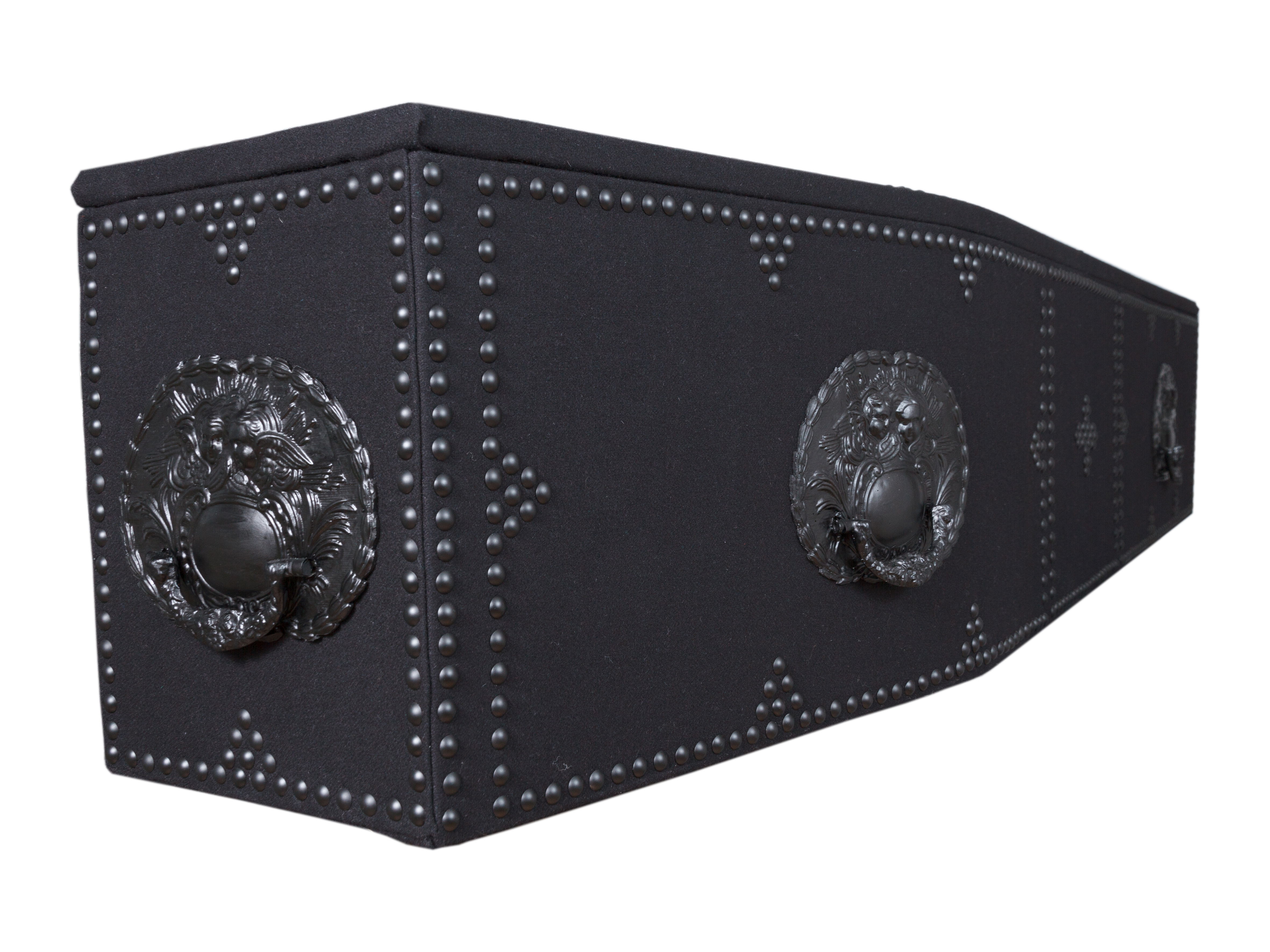
 From Kathryn White of Sanctuary Point NSW near Jervis Bay - the Commemorative Native Australian Flowers standing in the Sea.
From Kathryn White of Sanctuary Point NSW near Jervis Bay - the Commemorative Native Australian Flowers standing in the Sea. Here in the Jervis Bay area on the South Coast of New South Wales where the waters of the Tasman Sea flow into Jervis Bay and St Georges Basin, from Sussex Inlet my home of Sanctuary Point is on its shores.
Here in the Jervis Bay area on the South Coast of New South Wales where the waters of the Tasman Sea flow into Jervis Bay and St Georges Basin, from Sussex Inlet my home of Sanctuary Point is on its shores.

 The Golden Wattle, Australia’s National Floral Emblem is now just coming into bloom and how fitting for 13th July 2024 and freshly picked from bushland (above) at Jervis Bay.
The Golden Wattle, Australia’s National Floral Emblem is now just coming into bloom and how fitting for 13th July 2024 and freshly picked from bushland (above) at Jervis Bay.  The silver leaved mountain gum (Eucalyptus pulverulenta) is also a native of southern New South Wales.
The silver leaved mountain gum (Eucalyptus pulverulenta) is also a native of southern New South Wales.



 Geraldton waxflower or Chamelaucium waxflower are a species of the myrtle and is a wildflower native only to Western Australia and this flower represents Capt. Matthew Flinders vast exploration and circumnavigation of Australia from western to the eastern shores.
Geraldton waxflower or Chamelaucium waxflower are a species of the myrtle and is a wildflower native only to Western Australia and this flower represents Capt. Matthew Flinders vast exploration and circumnavigation of Australia from western to the eastern shores. Kangaroo Paws (Anigozanthos) are also native only in the southwest of Western Australia.
Kangaroo Paws (Anigozanthos) are also native only in the southwest of Western Australia. MAP SHOWING SANCTUARY POINT - ST GEORGES BASIN on the SOUTH COAST OF EASTERN AUSTRALIA (left) AND JERVIS BAY THROUGH POINT PERPENDICULAR AND GOVERNOR HEAD
MAP SHOWING SANCTUARY POINT - ST GEORGES BASIN on the SOUTH COAST OF EASTERN AUSTRALIA (left) AND JERVIS BAY THROUGH POINT PERPENDICULAR AND GOVERNOR HEAD Photograph taken looking out to the Tasman Sea from Governors Head Jervis Bay by Kathryn White - where Captain Matthew Flinders sailed on his voyages of exploration.
Photograph taken looking out to the Tasman Sea from Governors Head Jervis Bay by Kathryn White - where Captain Matthew Flinders sailed on his voyages of exploration. 